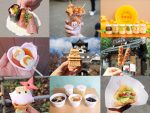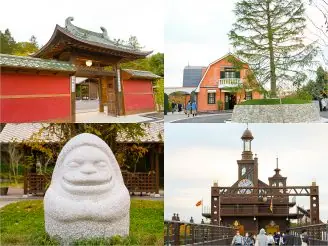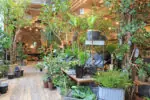"Jimokuji Kannon" is the guardian deity of Nagoya Castle and one of the Owari Kannon.

Table of Contents
"Hououzan Jinmokuji" in Ama City, Aichi Prefecture, is one of the oldest temples in Japan with a history next to Horyu-ji Temple and Shitenno-ji Temple.
Ieyasu once established four temples in the direction of the Onimon of Nagoya Castle as the "Owari Shi Kannon'': Jinmeji Temple (north), Kasadera (south), Ryuseiji (east), and Arako Kannon (west) and they became the guardian deity of Nagoya Castle. It is one of the temples that is crowded with people visiting Ehomai.
The history and important cultural property of Jimokuji
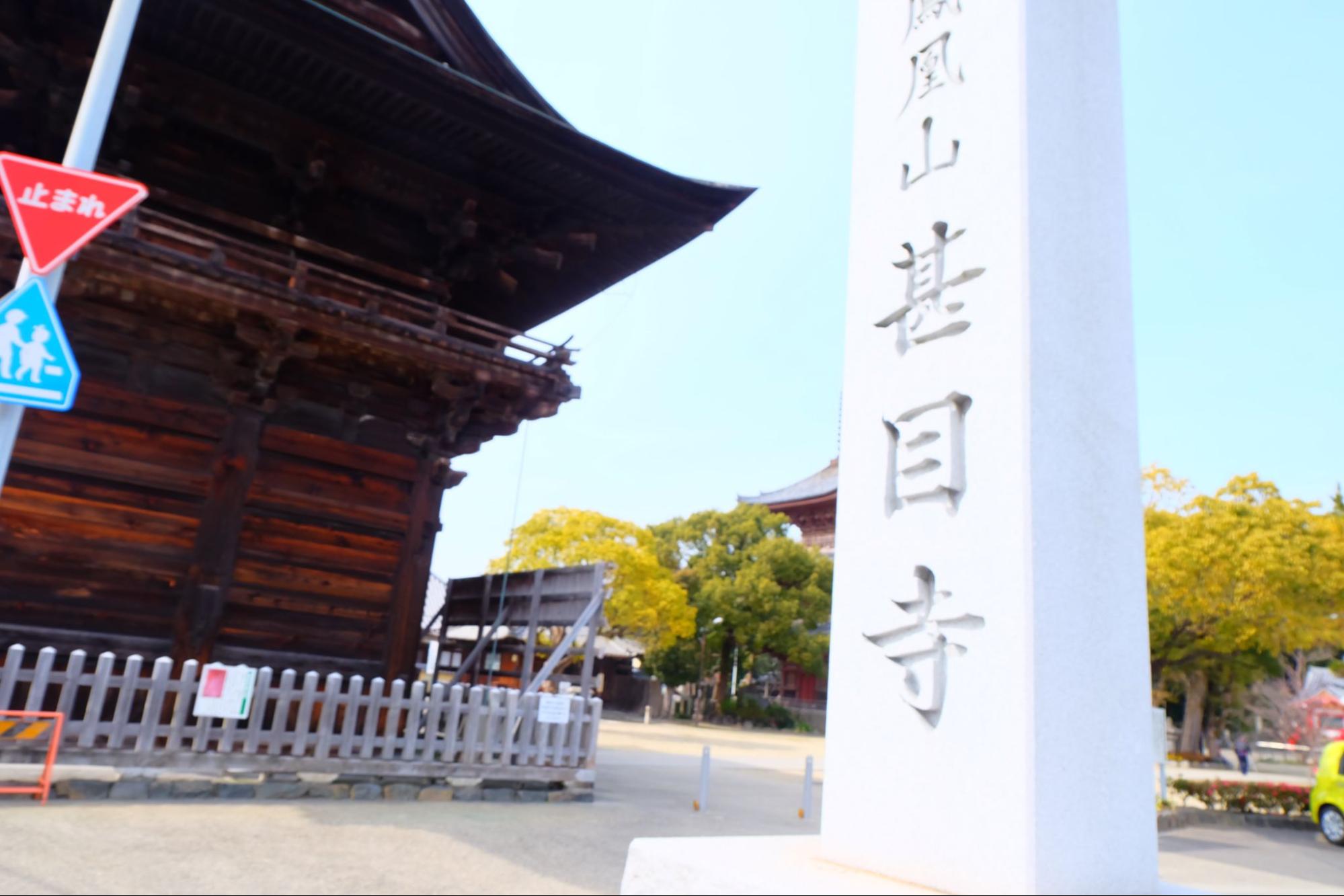
The origin of Jimokuji dates back over 1400 years.
In 597 A.D., a fisherman named Ryuma from Ise Hadame Village was fishing about 200 meters southeast of the current location when he caught a golden statue of Kannon in his net, and Ryuma was delighted. It is said that Jinme-ji Temple began when the man built a hall and enshrined a statue in this area.
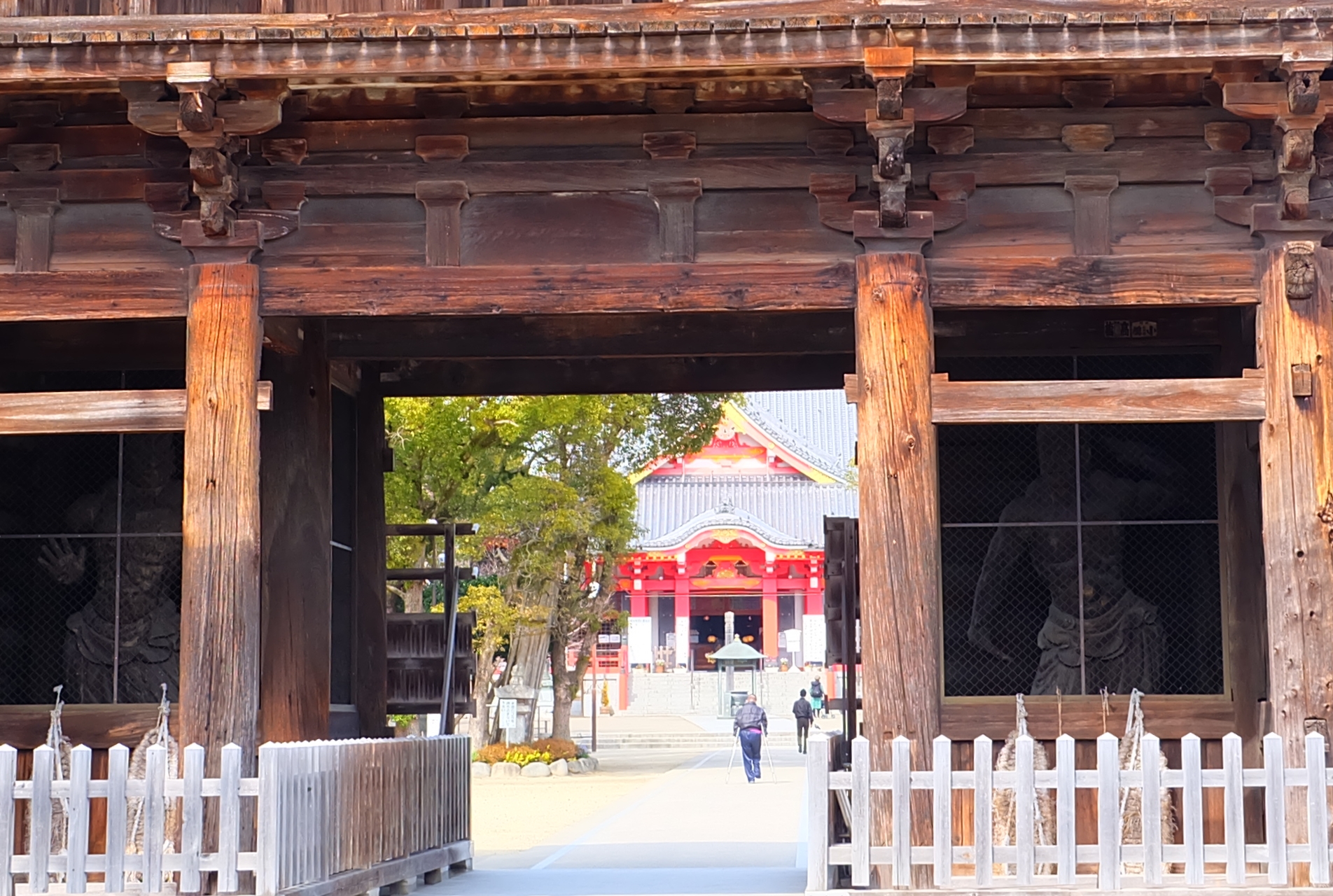
The statue of Sho Kannon is enshrined as a small image of Buddha inside the eleven-faced Kannon.
Important Cultural Property No. 1 "Nandaimon (Niomon)"
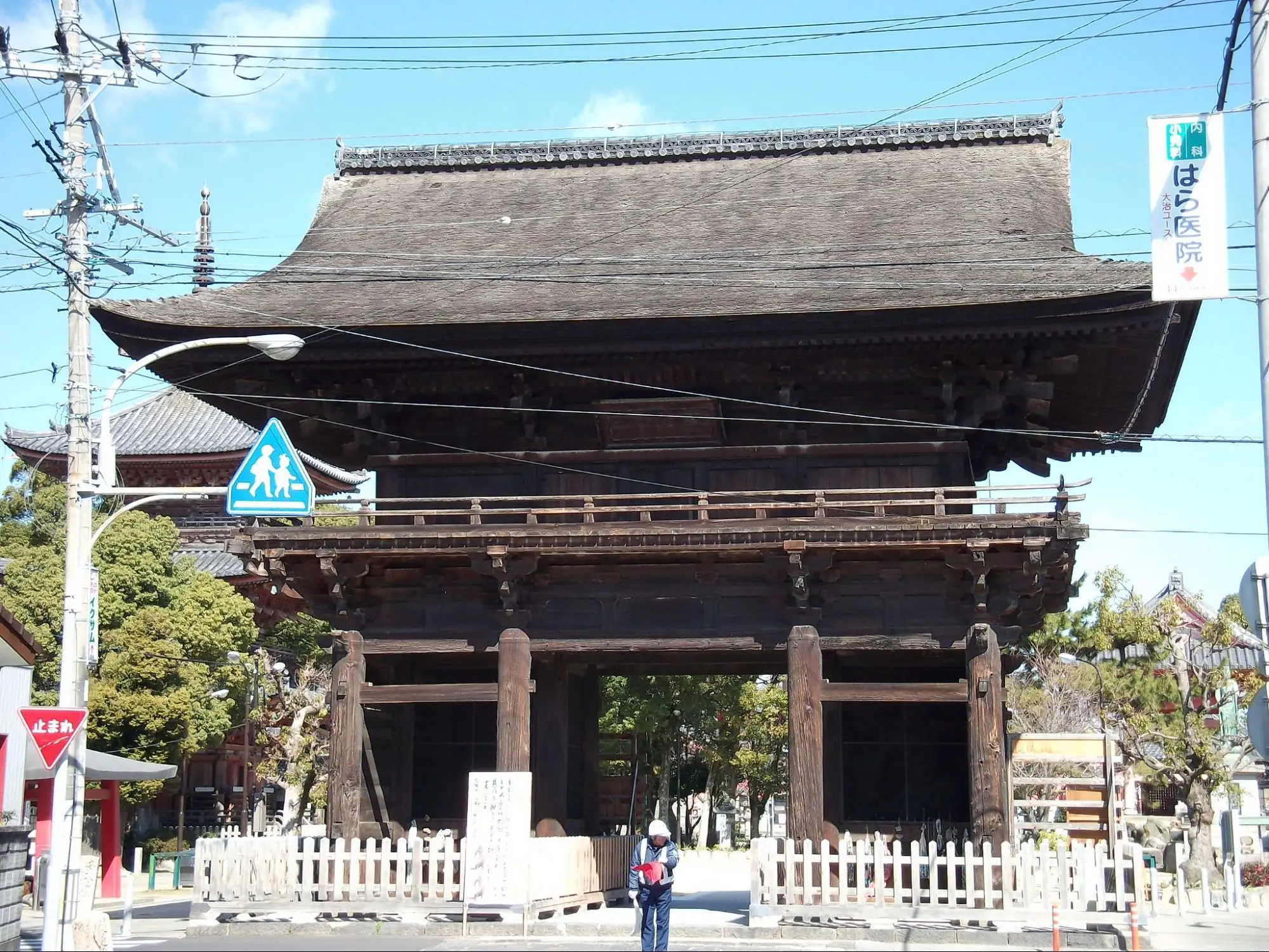
There are three buildings in Jimokuji that are designated as important cultural properties. One of them is "Nandaimon".
It is a majestic south gate based on the style of the Kamakura period.


On both sides of the Nandaimon, there are powerful wooden Nio statues with bright eyes. This is a donation by Masanori Fukushima, a warlord from Ama City who supported Hideyoshi behind the scenes as a vassal of Hideyoshi.
Important Cultural Property No. 2 "Higashi Mon"
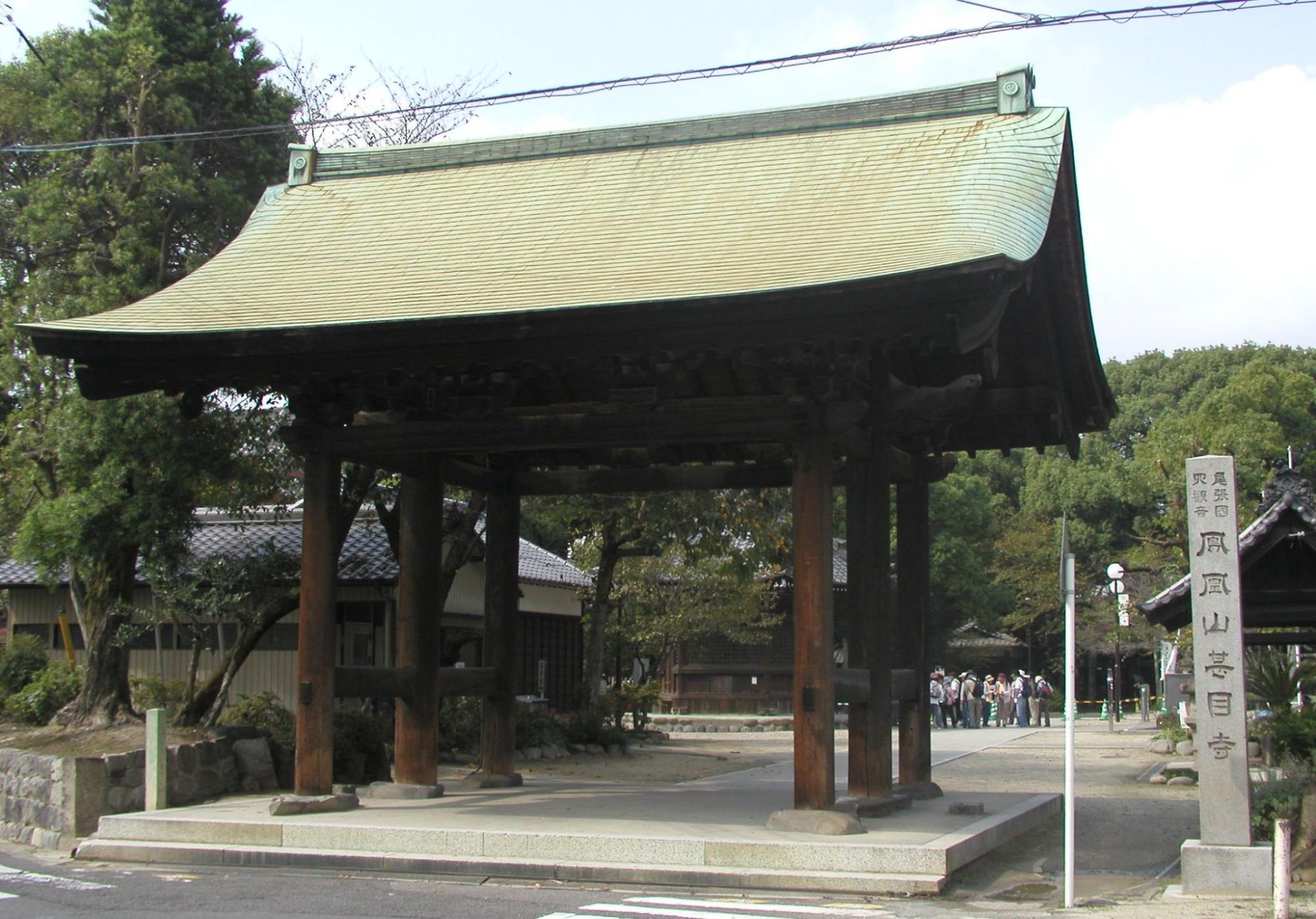
This is "Higashi Mon" (East Gate ). The roof is gabled and copper-plated, and is a building from the Muromachi period.
Important Cultural Property No. 3 "Three-Storied Pagoda"
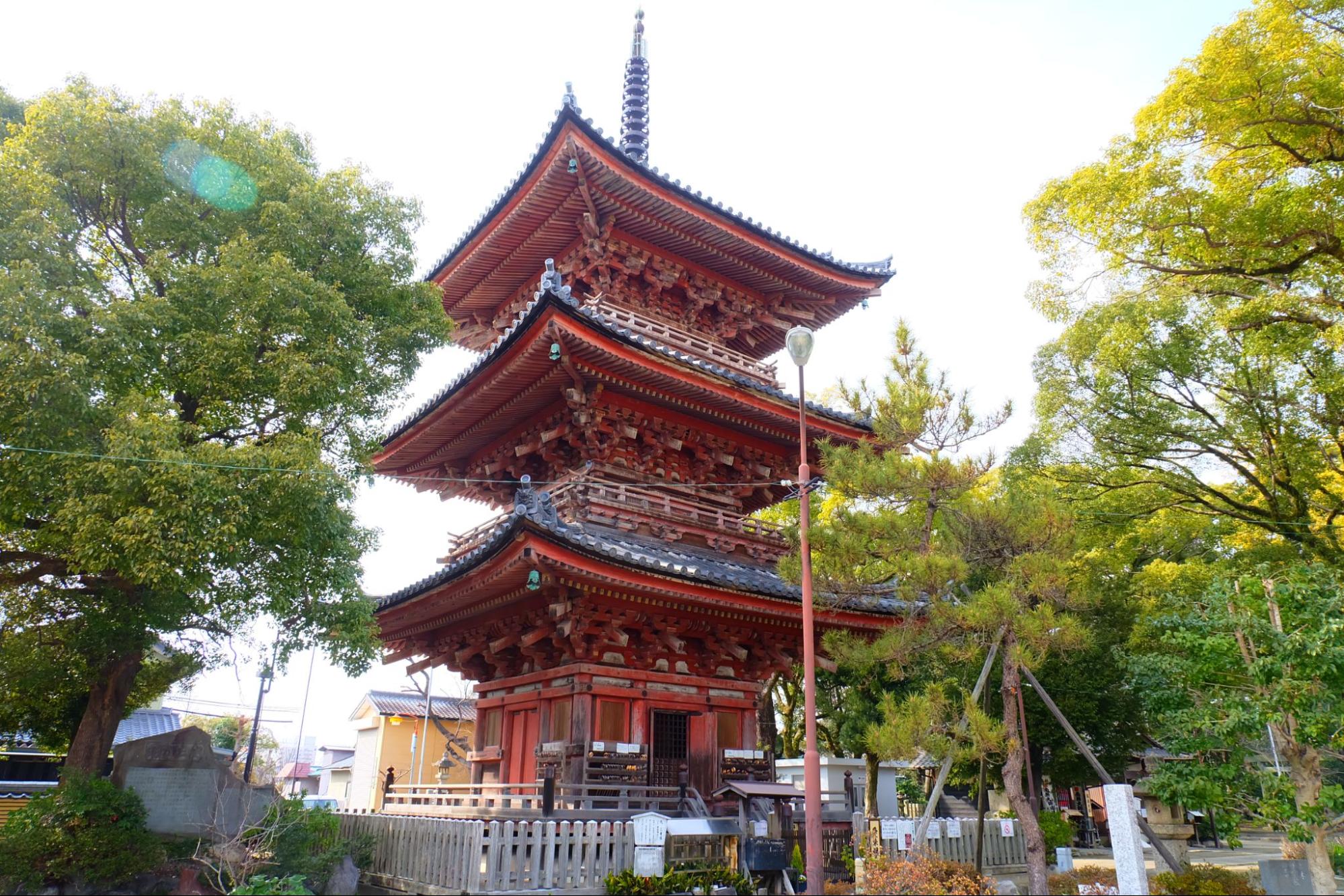
The three-storied pagoda with a tile roof boasting a height of 28m stands out in the precincts. Built in 1623, it was donated by Hanjuro Yoshida, a Nagoya money changer.
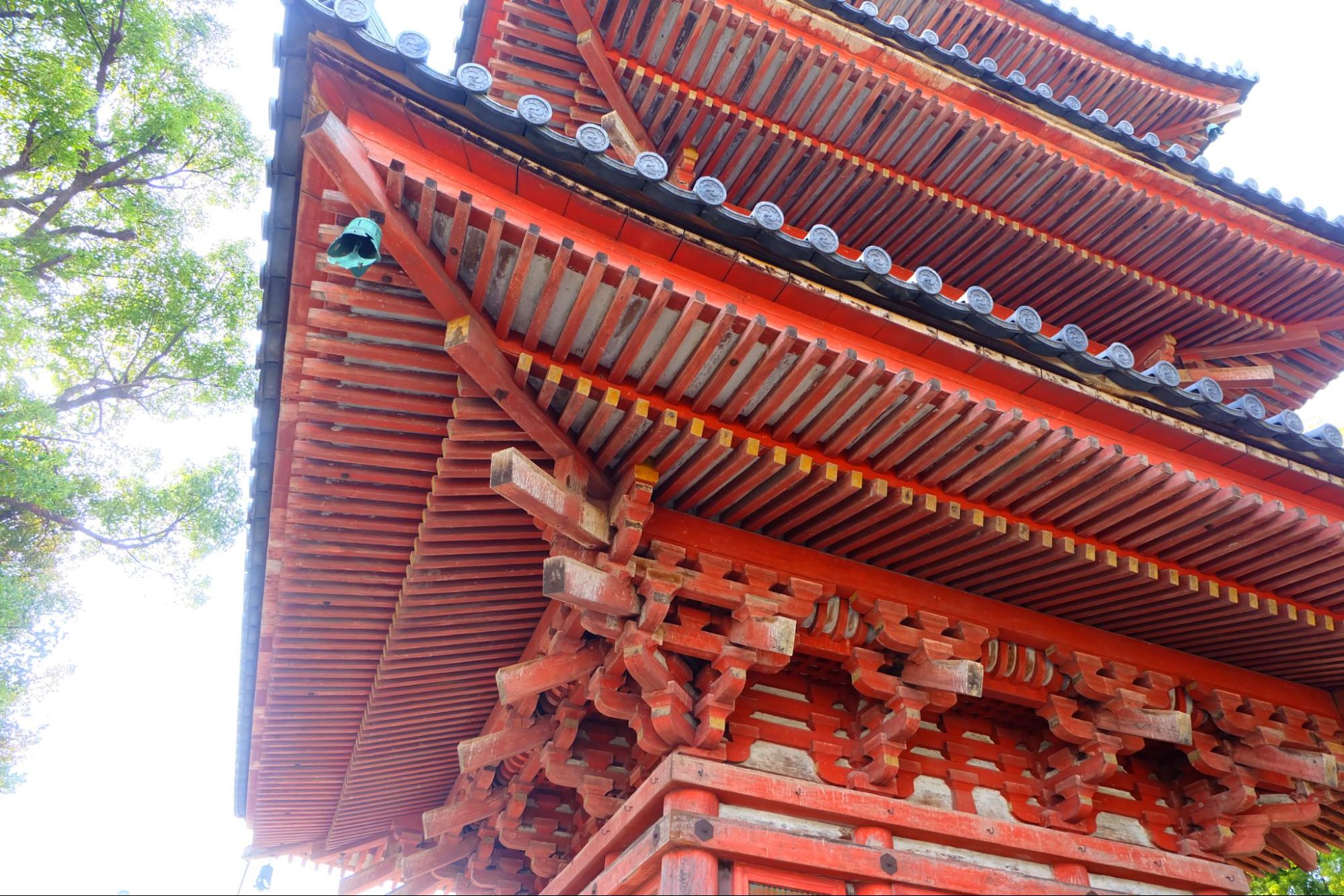
The principal image is Aizen Myo-o, who is believed to bring good luck in marriage and those who are hard of hearing. The wooden statue of Aizen Myoo, made in Yosegi-zukuri style and said to have been created during the Kamakura period, has a small Buddha image isencased in its abdomen.
Visit the main hall first
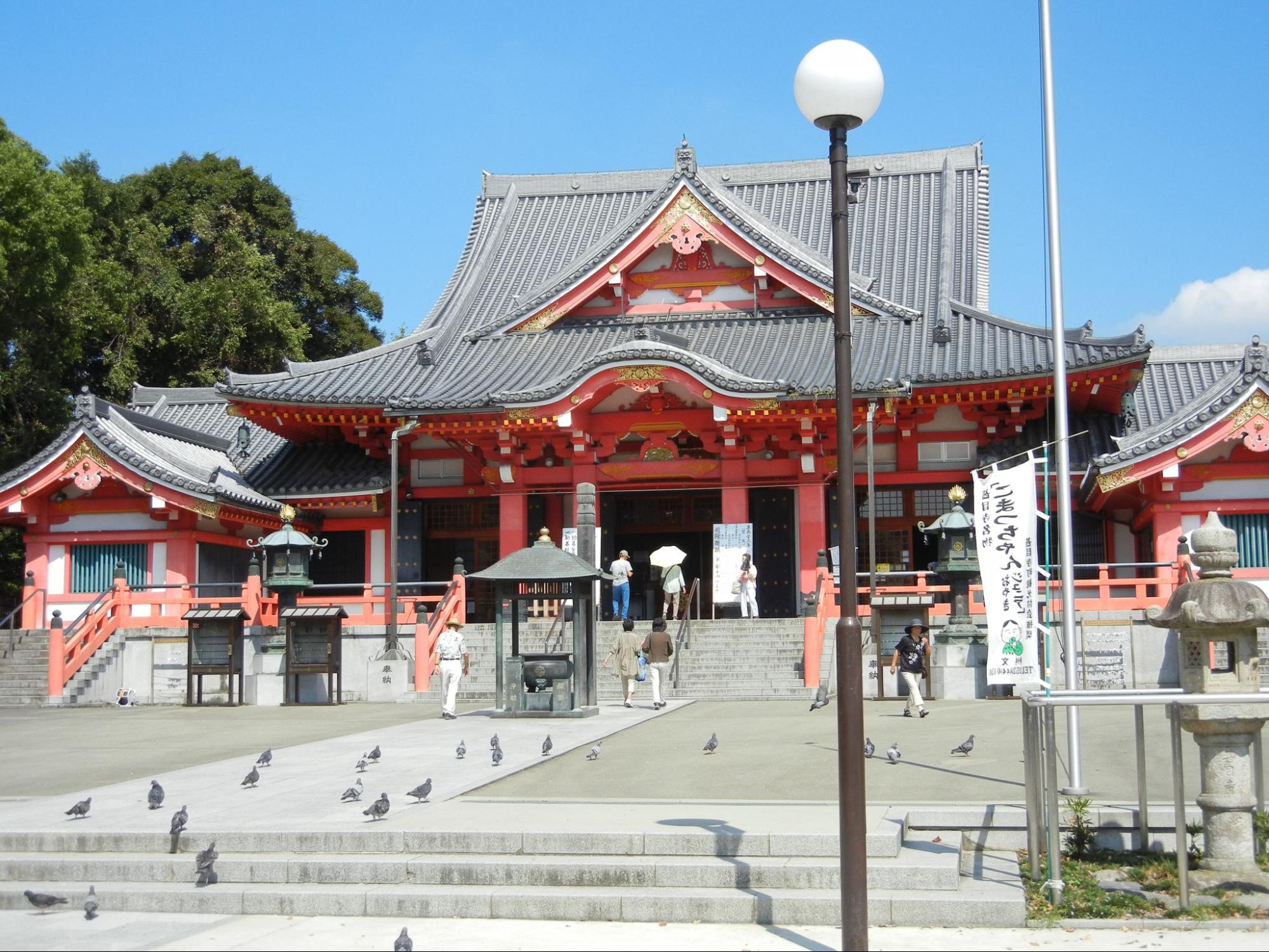
The main hall is a relatively new building, built in 1992. The upper part of the front facade is a triangular-shaped chidori-hafu, and the lower part of the front is a bow-shaped karahafu. You can also feed the pigeons, so there are lots of pigeons on the grounds!
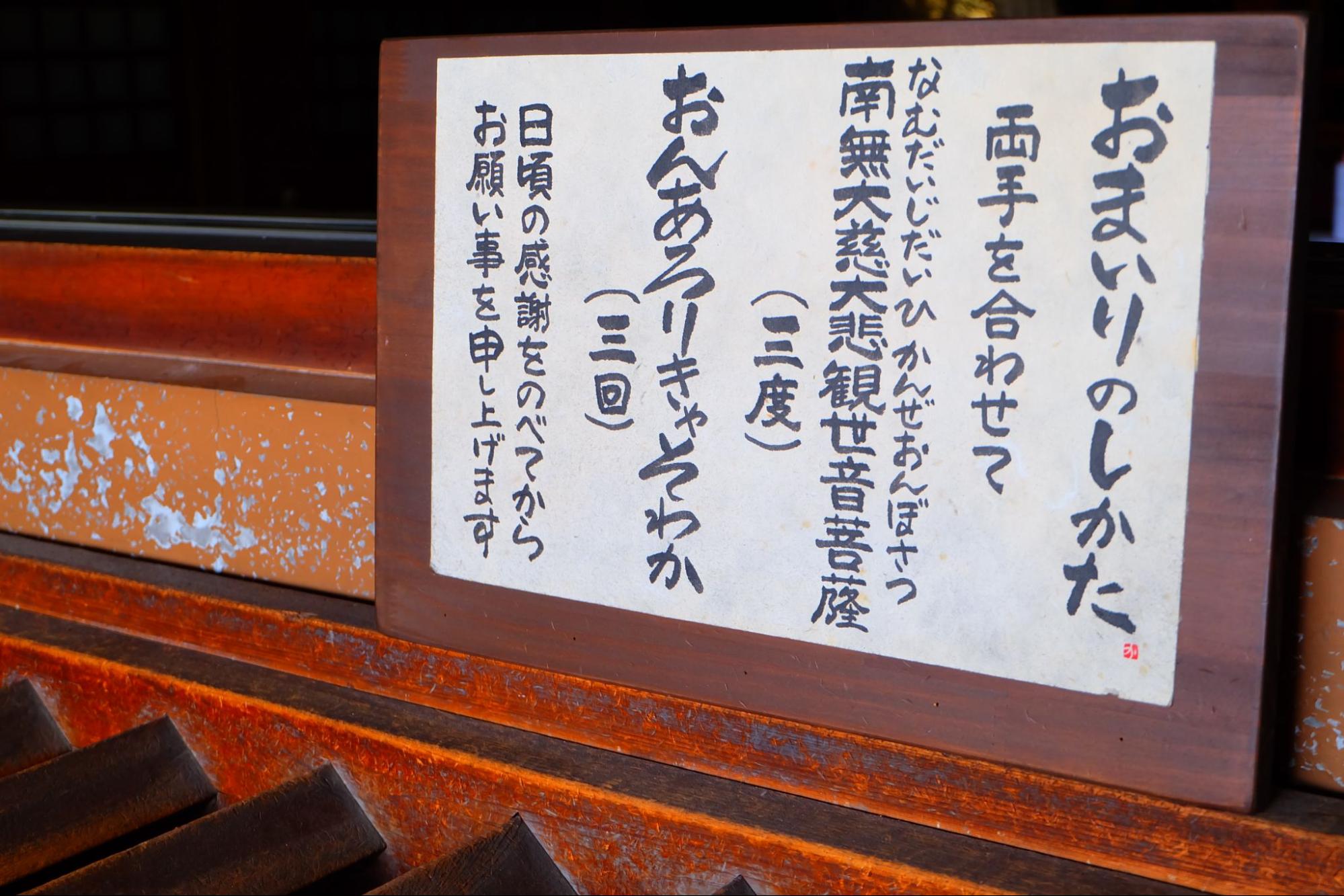
When you enter the main hall, bow once and join hands. As you can see on the information board, after chanting the mantra and expressing your daily gratitude, let them know if you have any wishes.
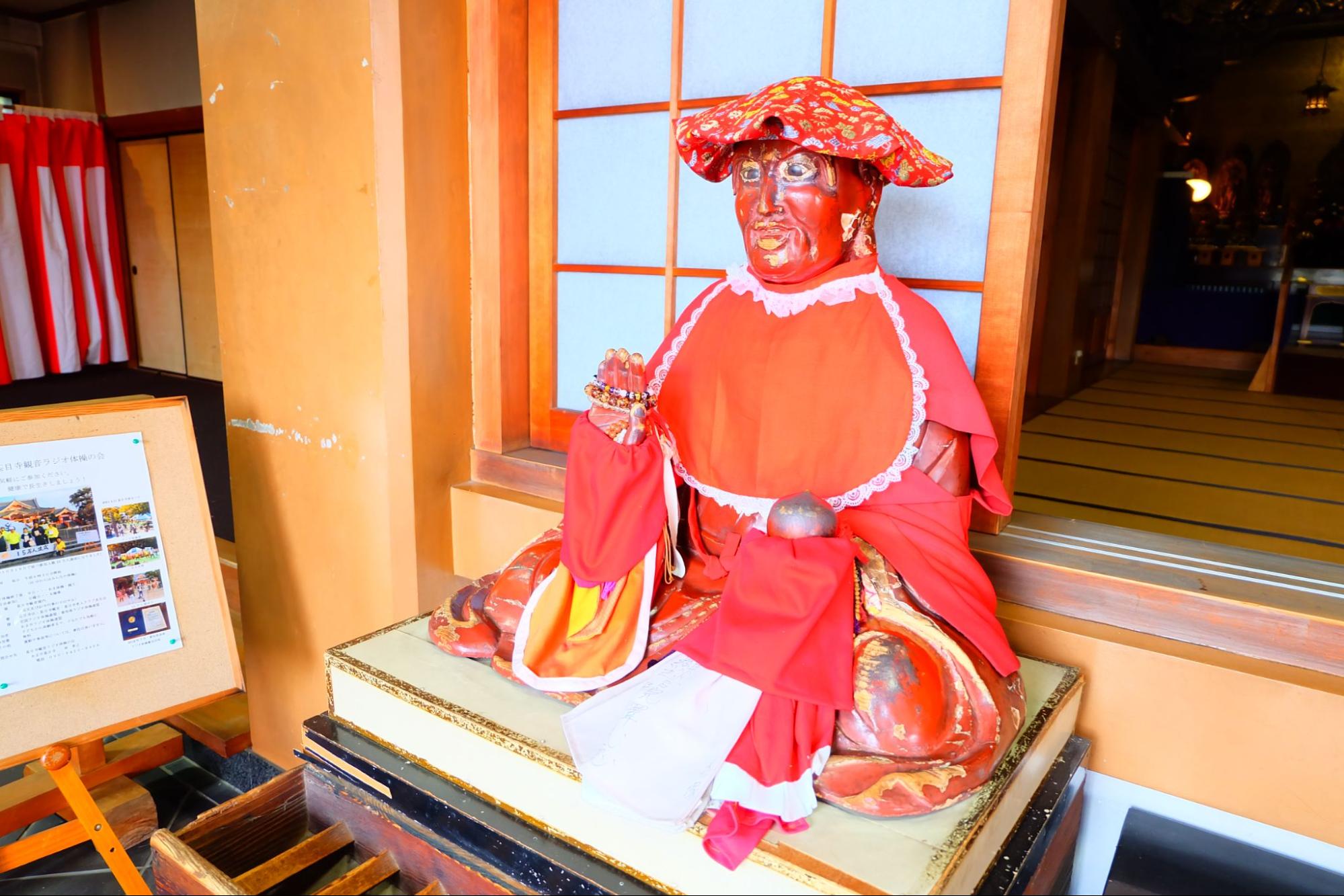
Beside it is a statue of one of Buddha's disciples, Binzuru. It is said that he continued his training in order to save the common people, so it is a good idea to pray for recovery from illness.
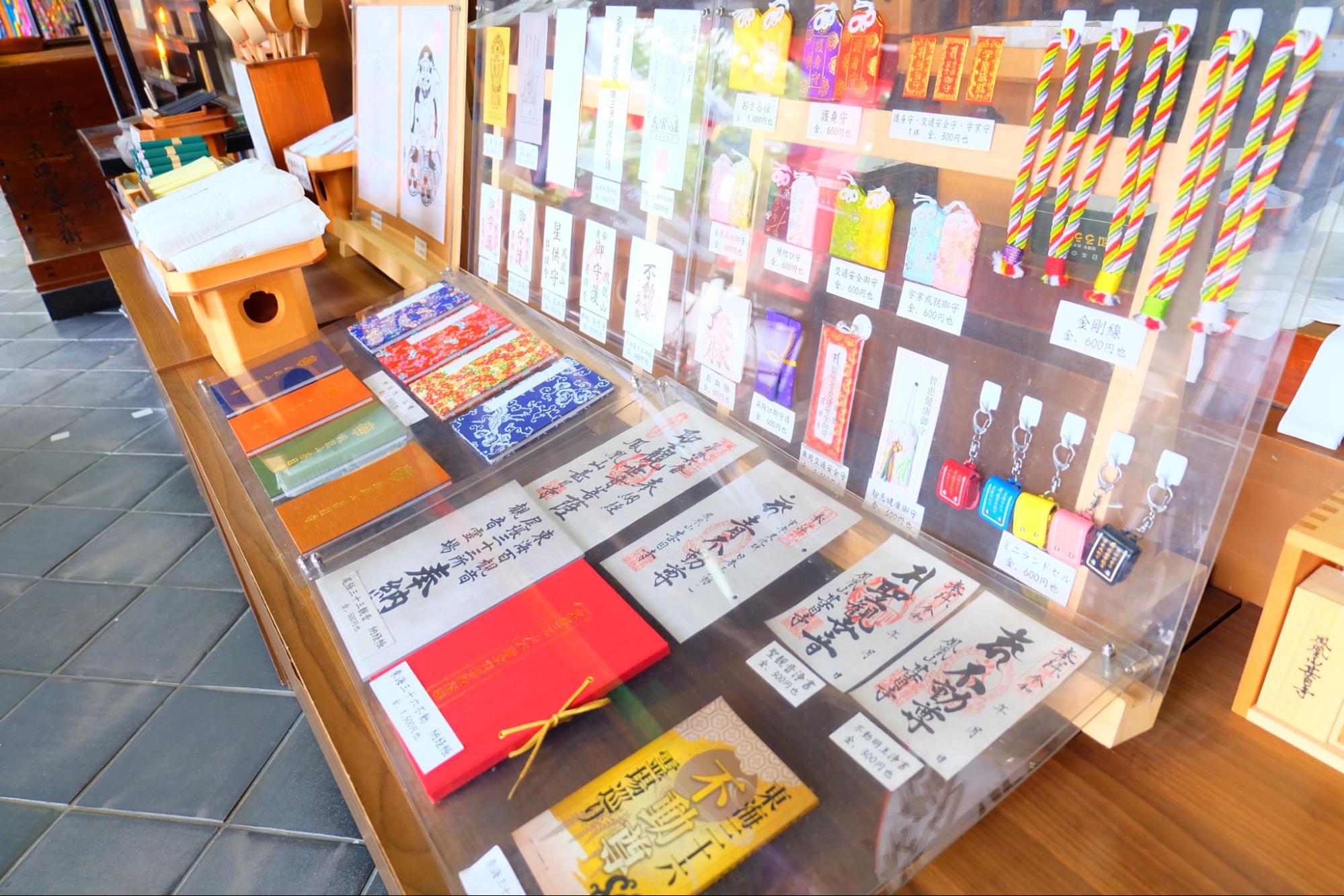
In addition, there are many things that you can only get here, such as amulets and red stamp books.
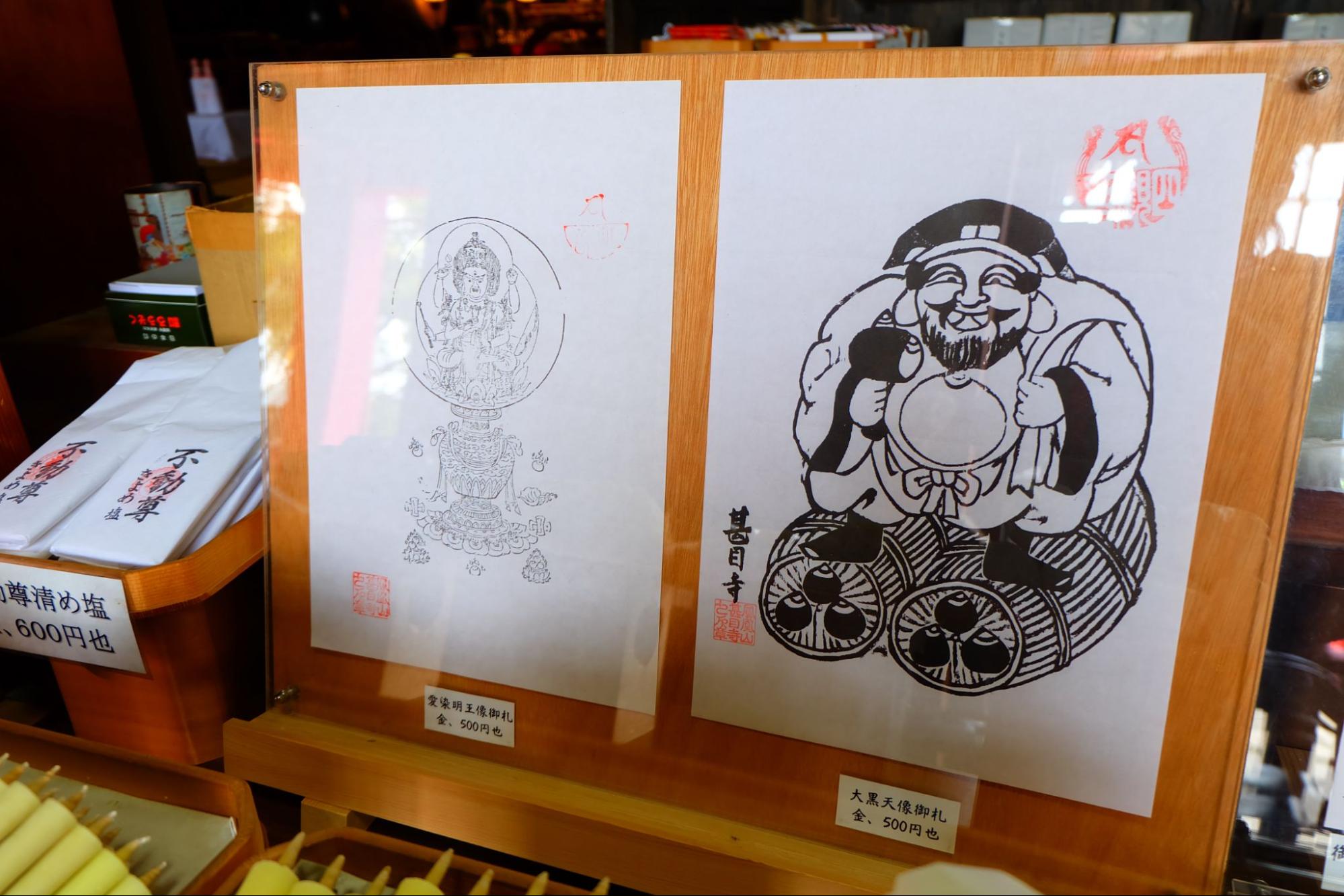
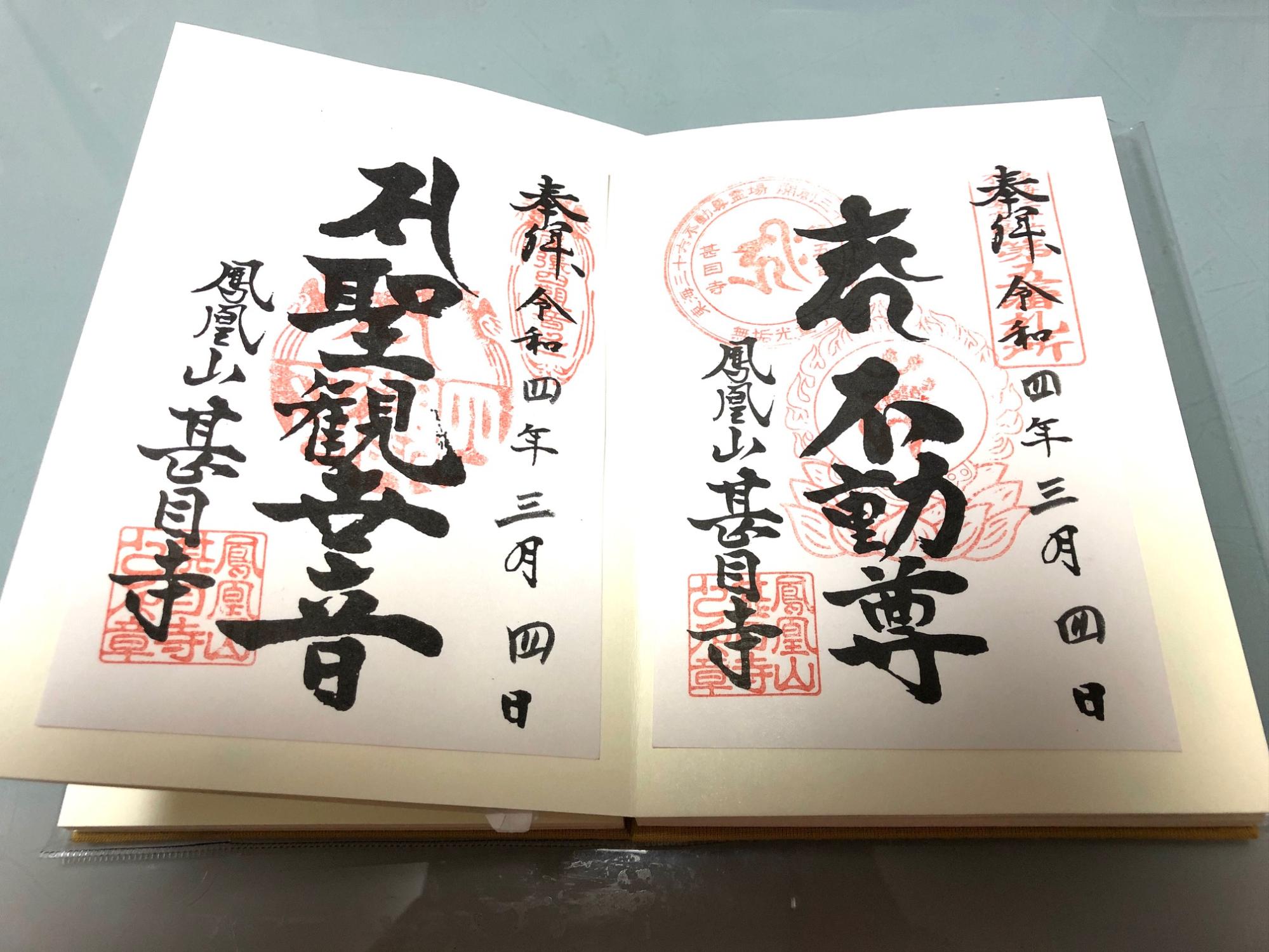
Goshuin of Sho Kannon and Fudo 300 yen each
The highlight! Face-to-face with Enma
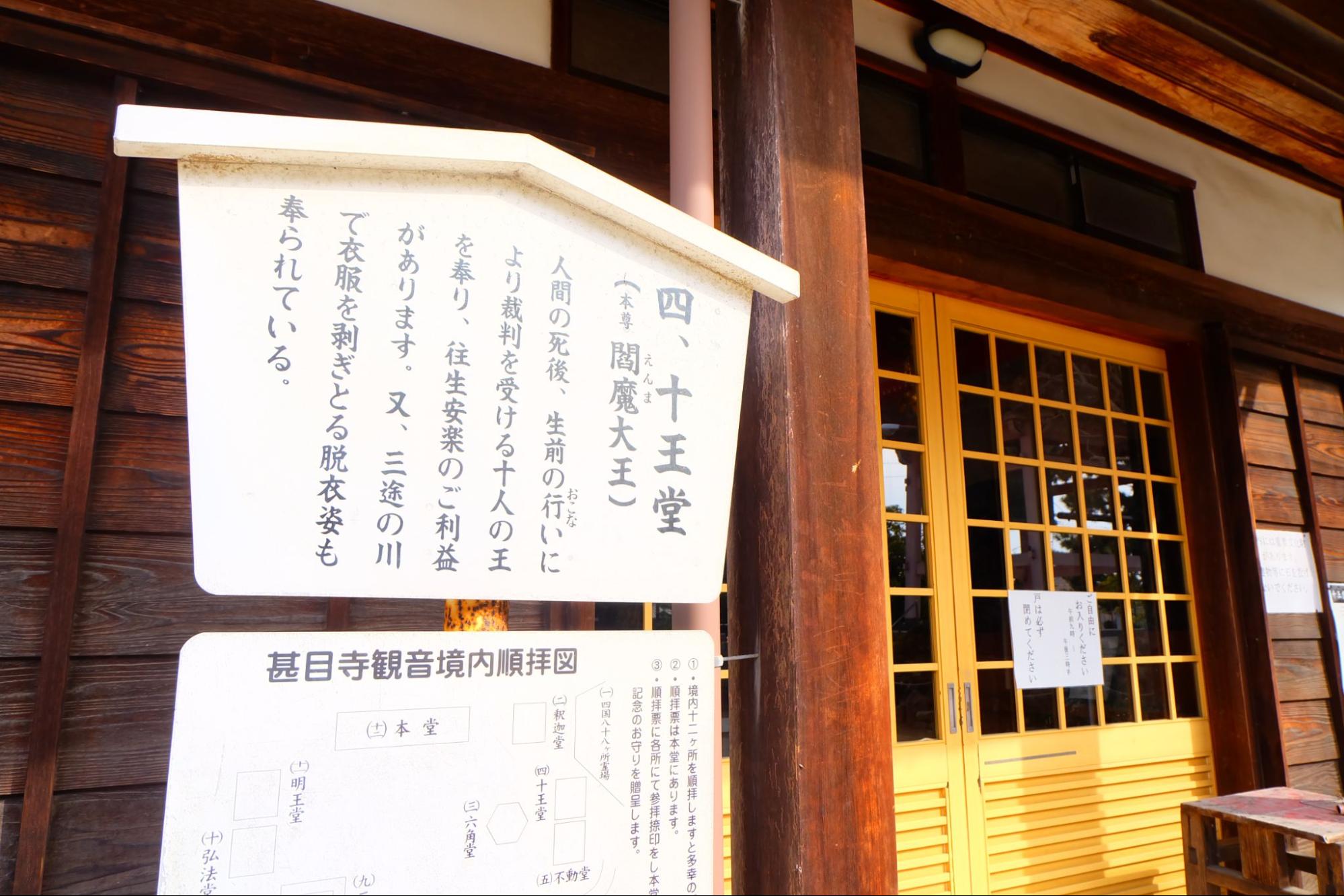
There are several temples in the precincts, but among them, Juou-do is a must-see!
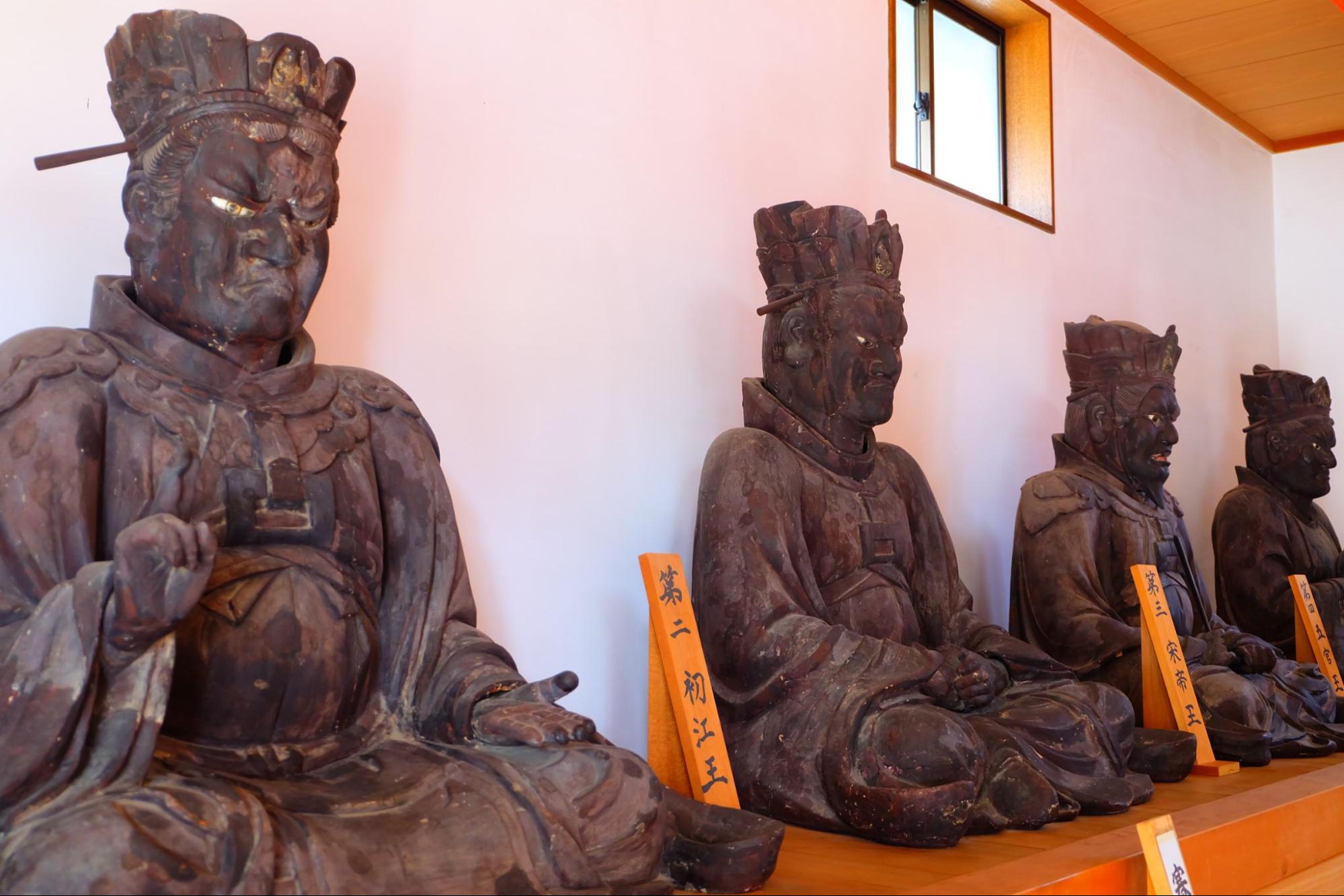

Ten Buddhas enshrined on both sides! Enma is the judge who represents the afterlife of humans.
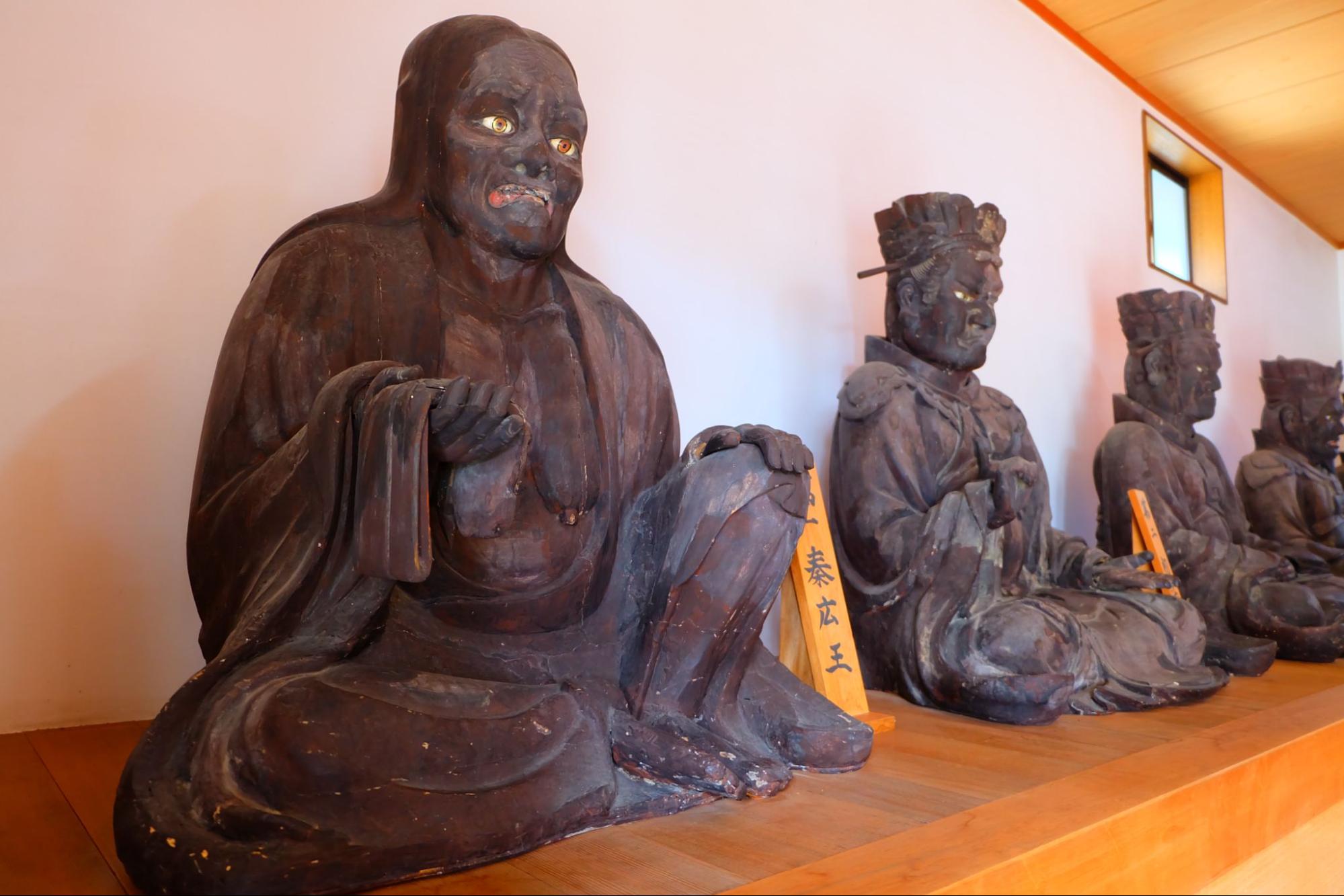
The statue with a woman's face in the foreground is called "Datsuiba," and it is said to be a demon woman who strips off the clothes of the dead who reach the underworld by the Sanzu River. The prestige and status of the person in life is what is in this life, and it is stripped of everything, so it represents the judgment of the person's naked humanity.
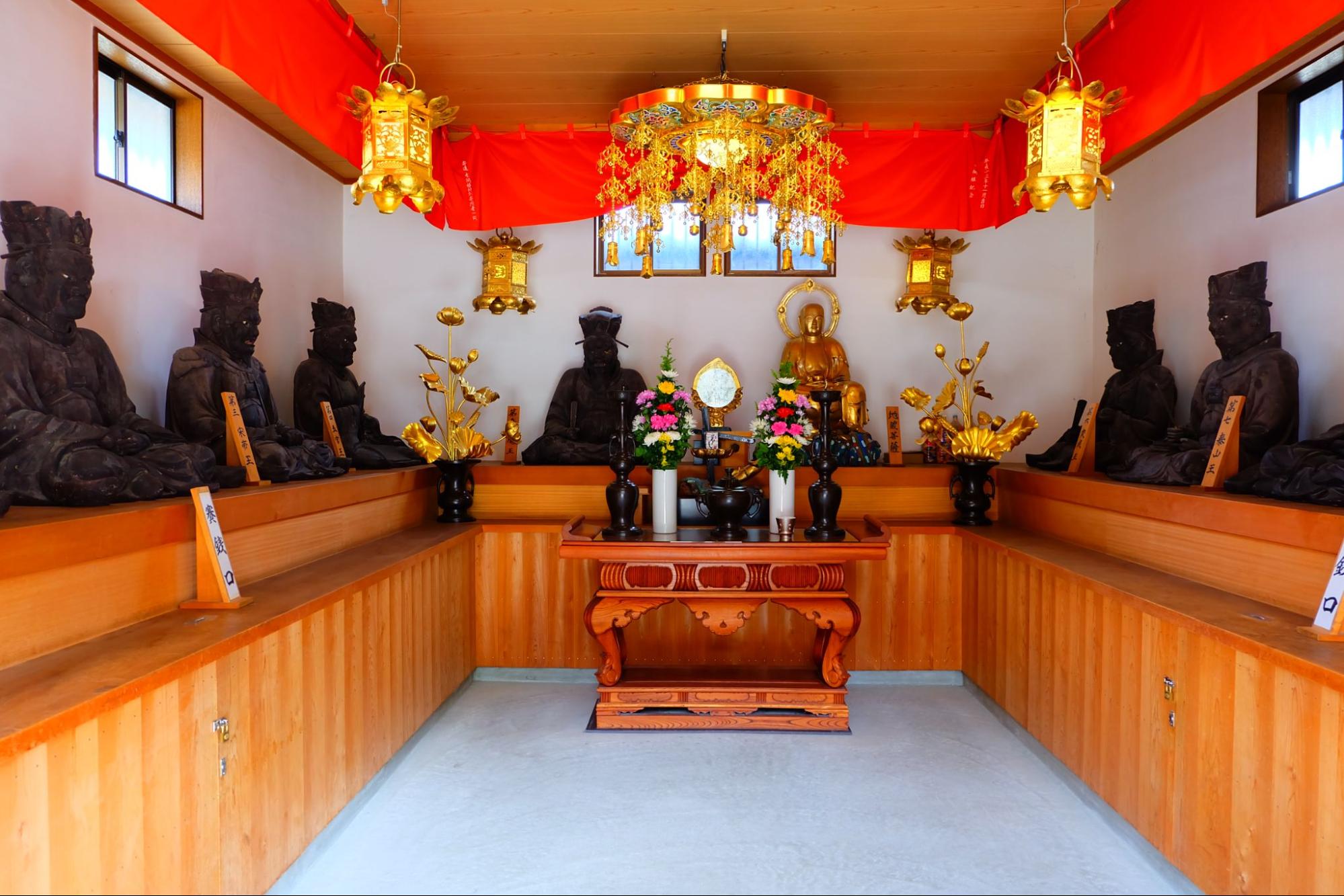
In addition, there are Chinese names such as Qin Hiroo, Shokoo, and Byodoo, which respectively represent Fudo Myoo, Shakanyorai, and Kanzeon Bodhisattva. Each has its own role before passing on to the next world, and you can't help but be taken aback.
What else in the precincts?
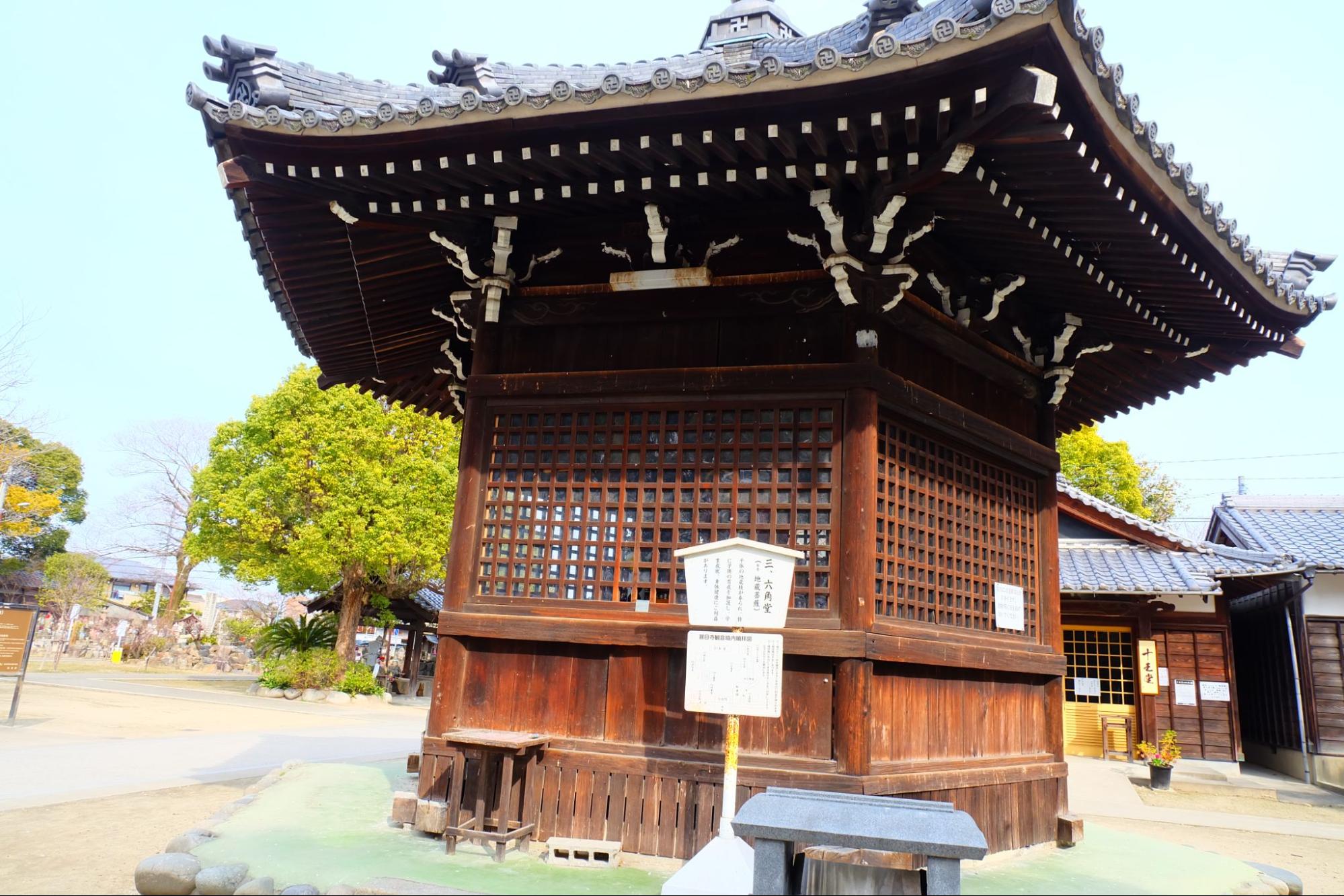
This is Rokkakudo. The principal image is Jizo Bodhisattva, and there are 1,000 Jizo statues enshrined here, which are said to provide blessings for children's upbringing, academic achievement, and physical health.
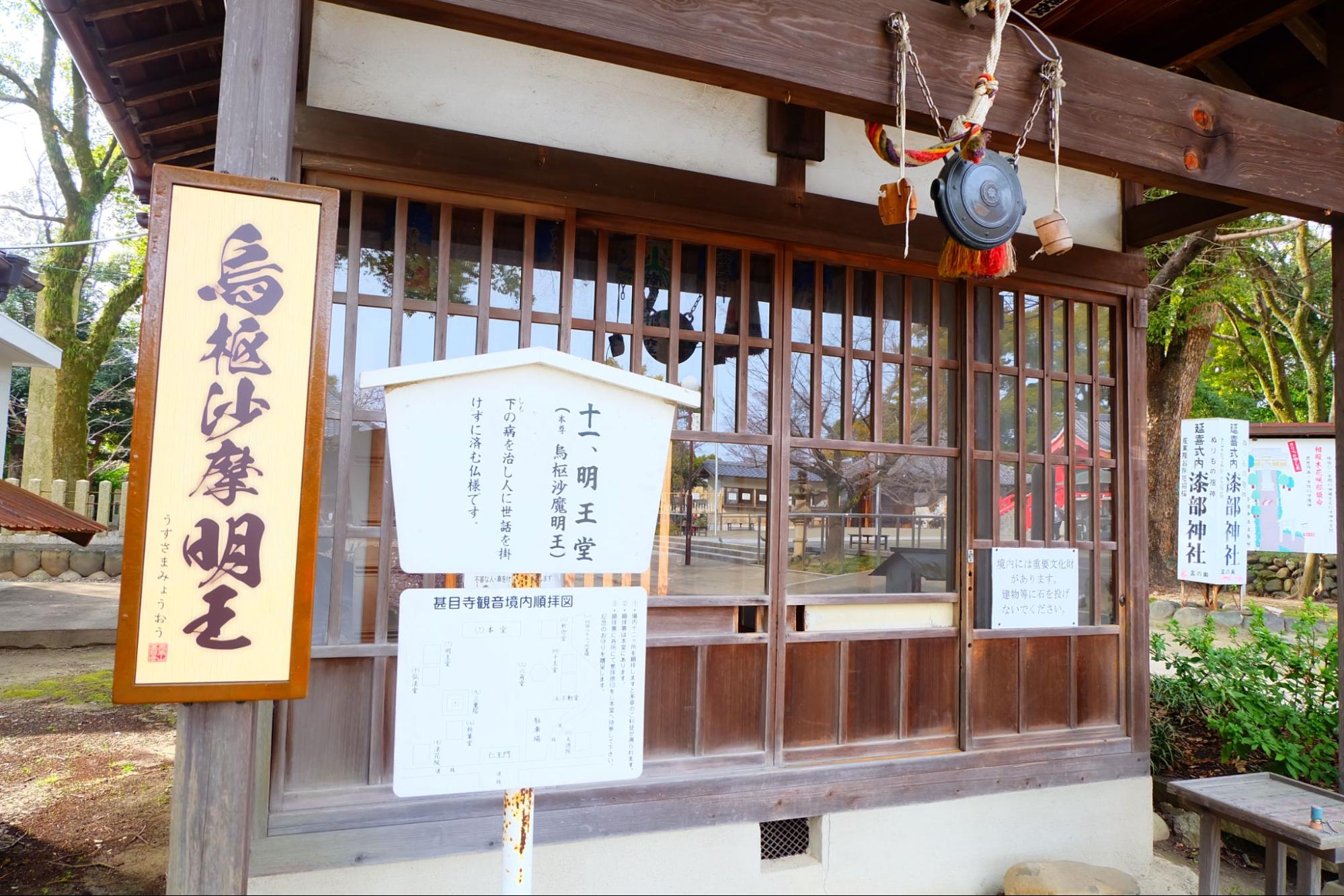
This is a Buddha whose principal image is Usasuma Myoo, who is said to be able to cure the illnesses of personal needs, so that they don't need to be taken care of by others. It is also known as the god of toilets, and is often enshrined in restrooms.
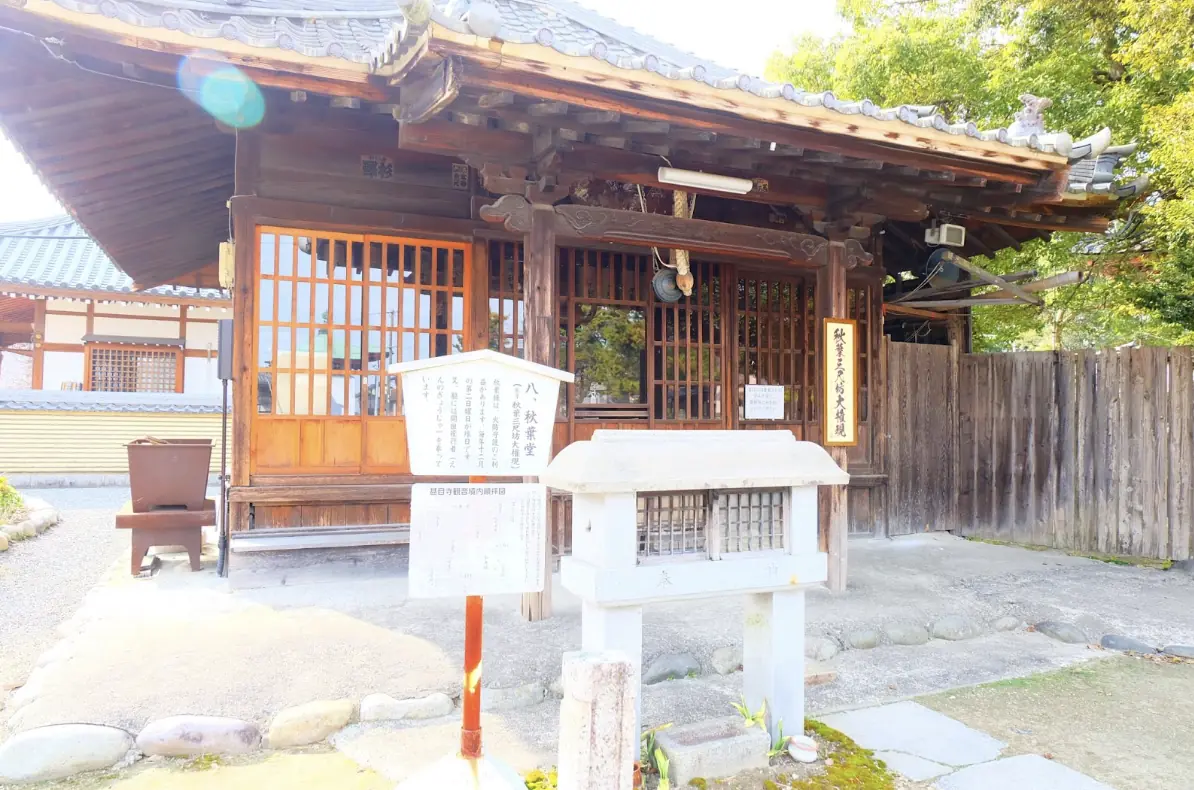
Akiha-do is known for its protection against fire.
Traditional Event of Owari Shi-kannon "Setsubun-e"
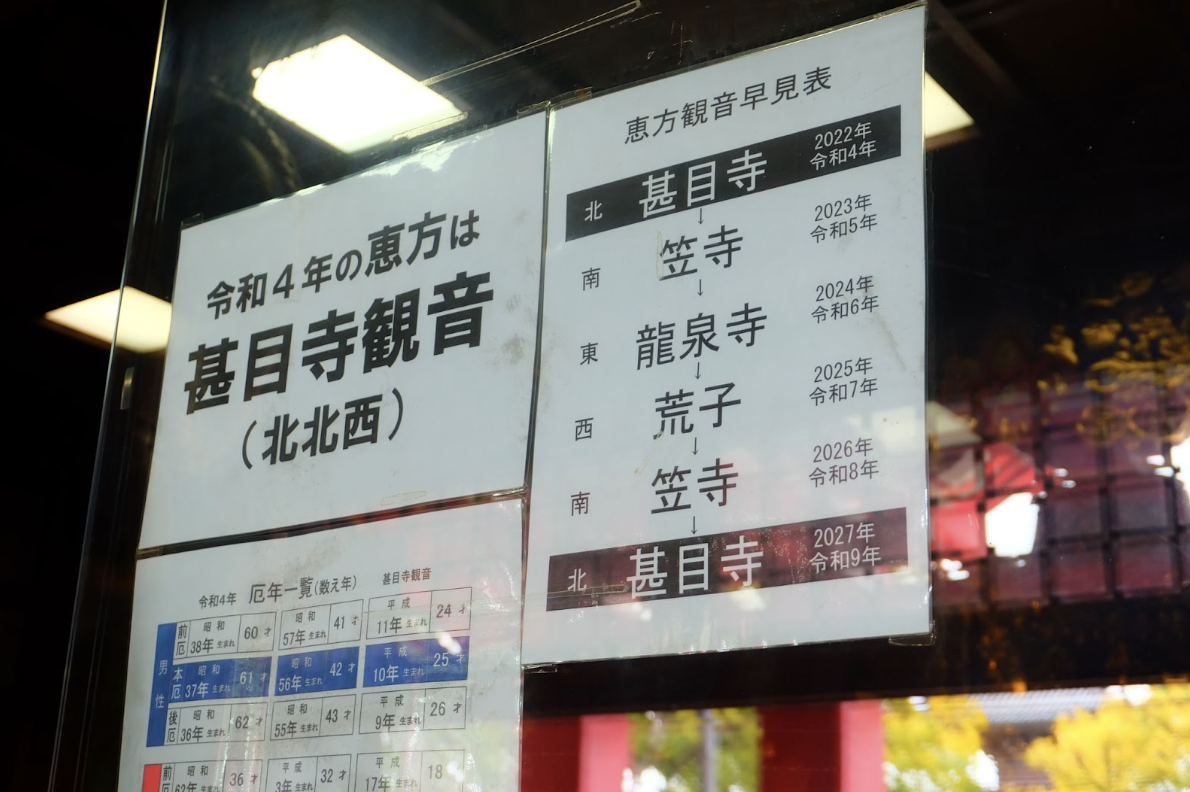
The major event at Jimokuji Temple is the "Hatsukannon-e'' held every year on January 18th according to the lunar calendar. The next most popular festival is "Setsubun-e."
Setsubun-e is a festival where beans are thrown every year on Setsubun to pray for good health. Among them, the direction where Toshigami-sama is located is called the eho, and it is said that it is best to visit one of the four Kannon temples that corresponds to that eho.
The lucky direction of 2022 is north-northwest, so here Jimokuji corresponds to that lucky direction. By the way, it seems that the eho of 2023 will be Kasadera.
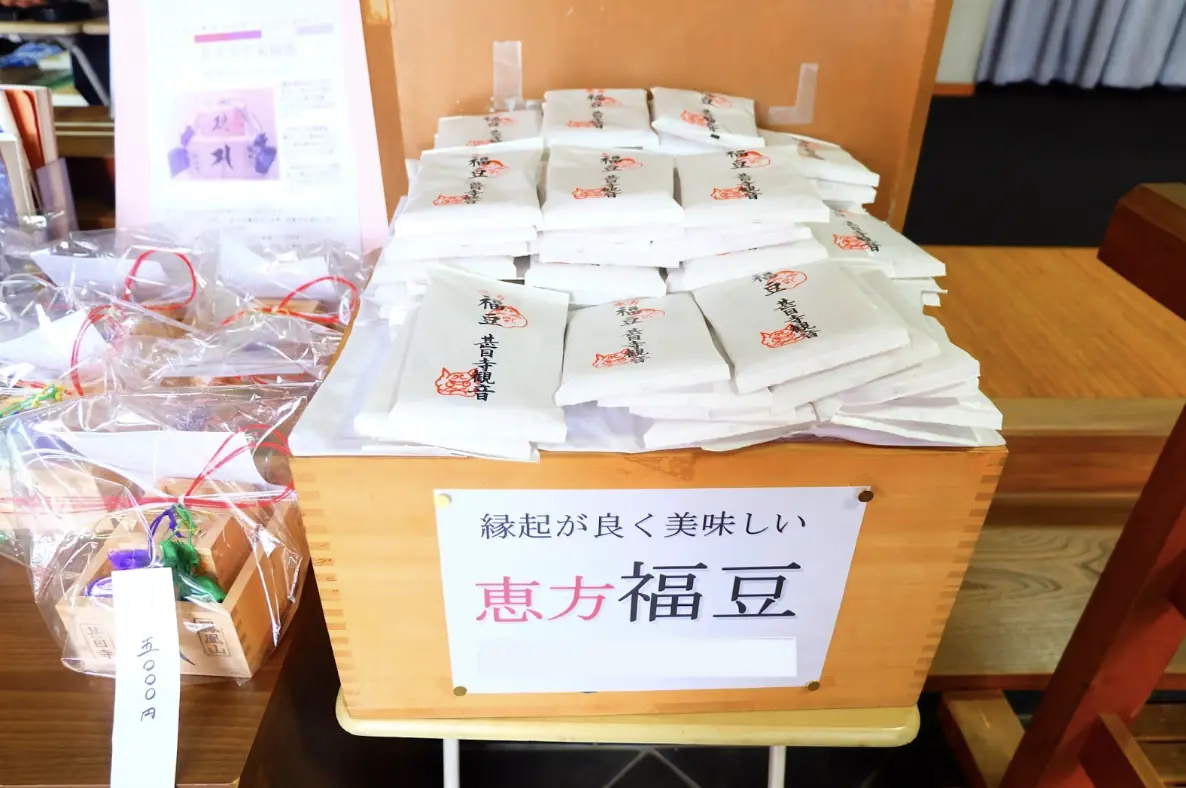
The Setsubun festival of Kannon, who is said to have the benefit of warding off evil. If you are interested in the once-a-year “Eho Fukumame”, please check it out! (ends as soon as it runs out)
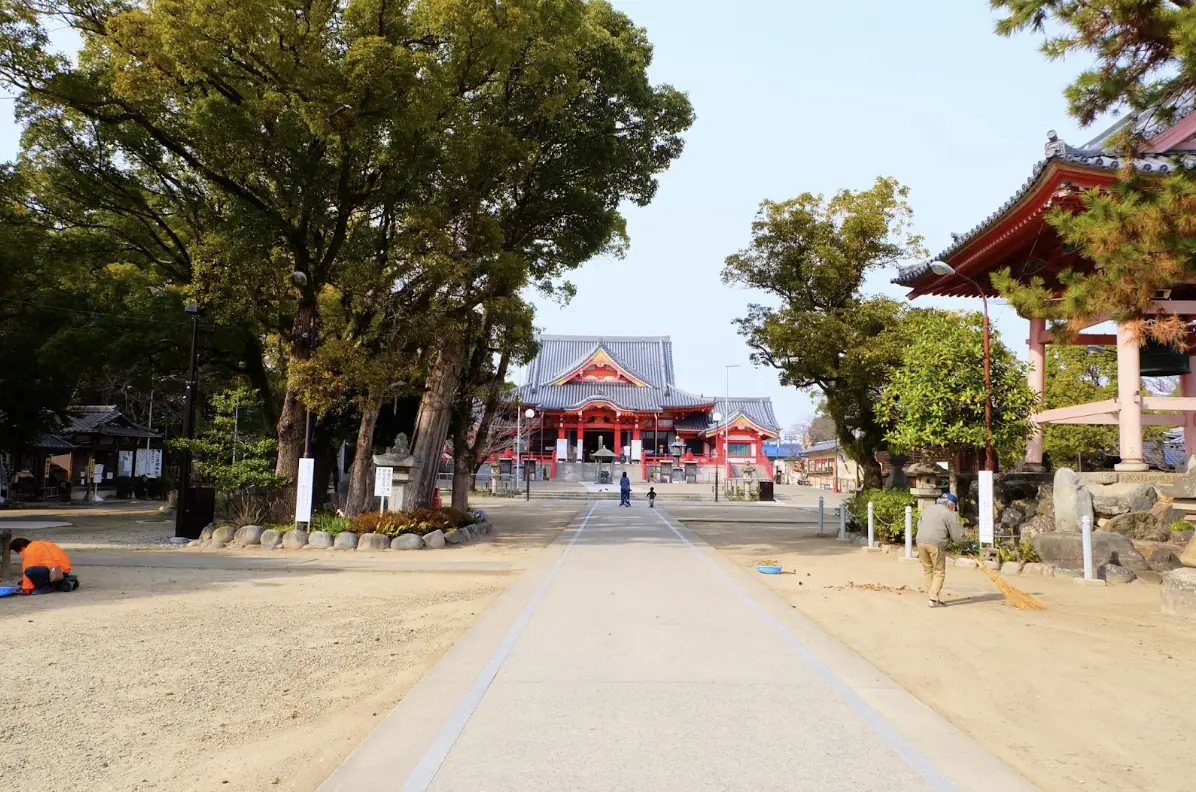
In addition, twice a month on the 12th and 21st of each month, the morning market and marche are held on the grounds of Jimokuji Temple, and these are also popular events every time. Be sure to visit the shrine when you visit the shrine.
You can receive the blessings of Ebisu and Daikokuten!
Be sure to check out the neighboring Daitokuin as well!
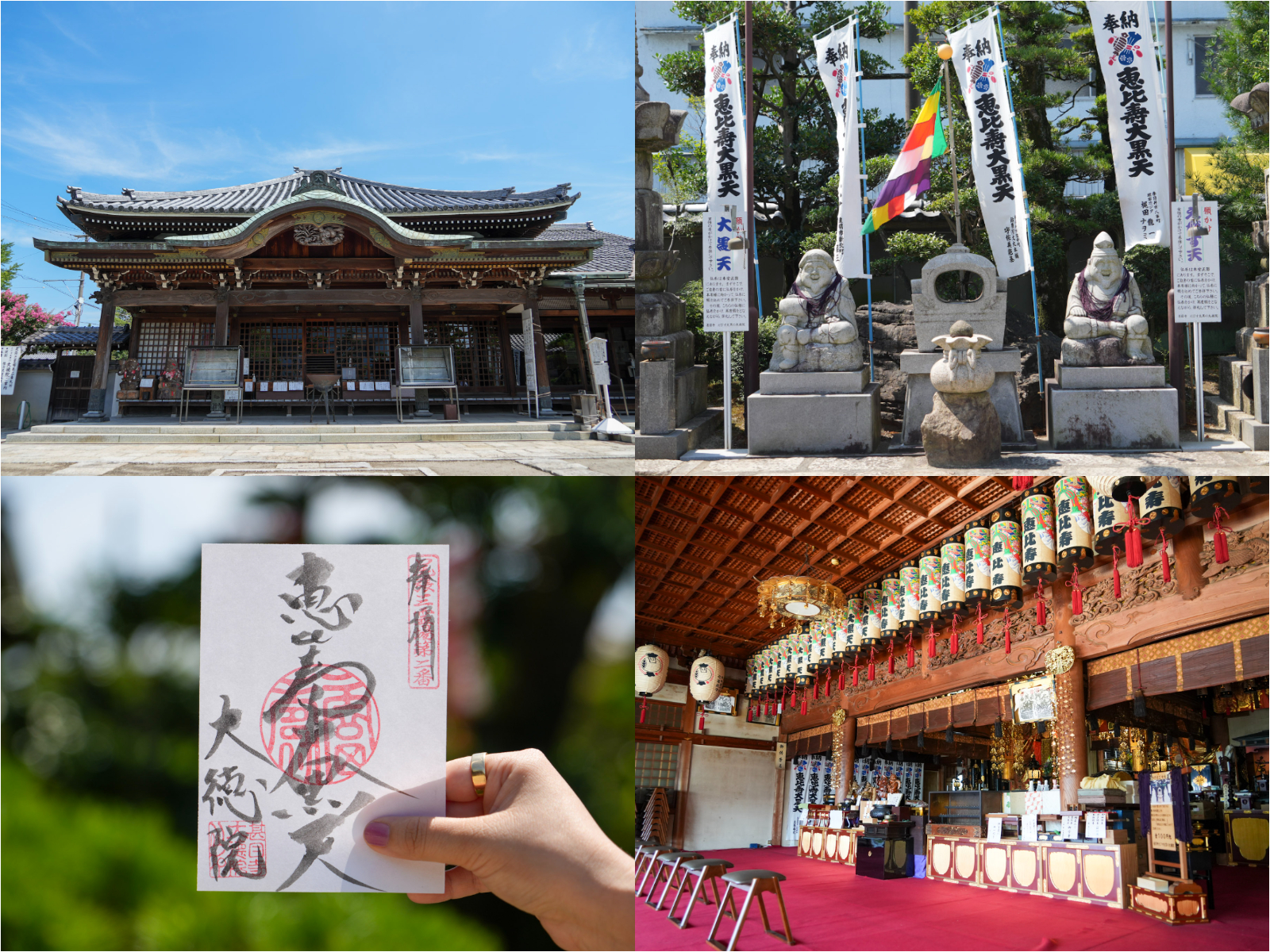
"Daitokuin" next to Jimokuji Kannon is the best power spot in Ama City where you can receive the blessings of Ebisu and Daikokuten. Please also visit Daitokuin next door.
[Daitokuin]
Address: 26 Jinmokuji Higashimonzen, Ama City, Aichi Prefecture
Phone number: 052-444-0241



![[Tokai Area] Shrines and Temples](https://life-designs.jp/wp/wp-content/uploads/2022/03/4b6784b9a0a6f408160ee9c32a307138-1024x580.png)
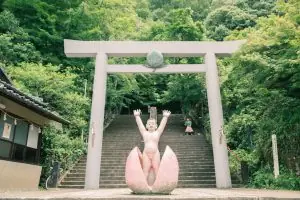
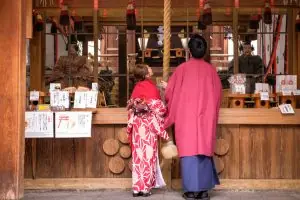
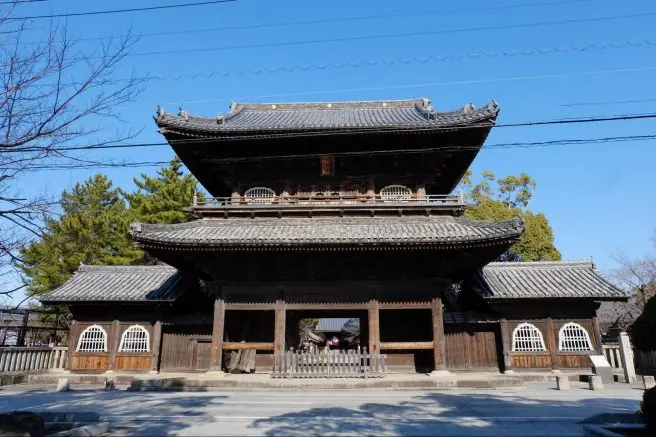
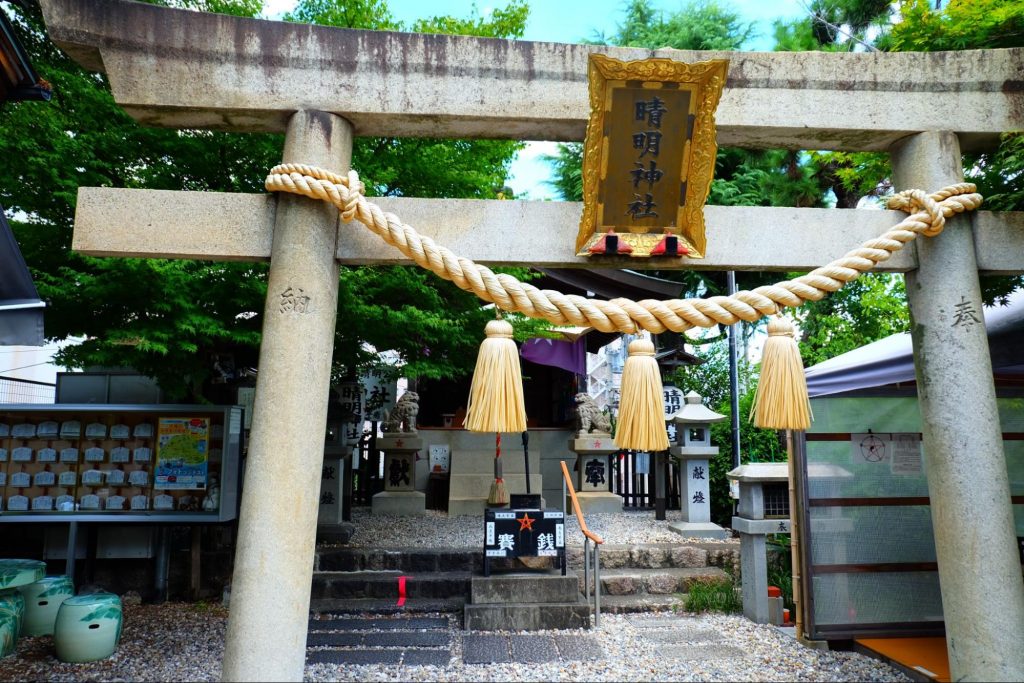
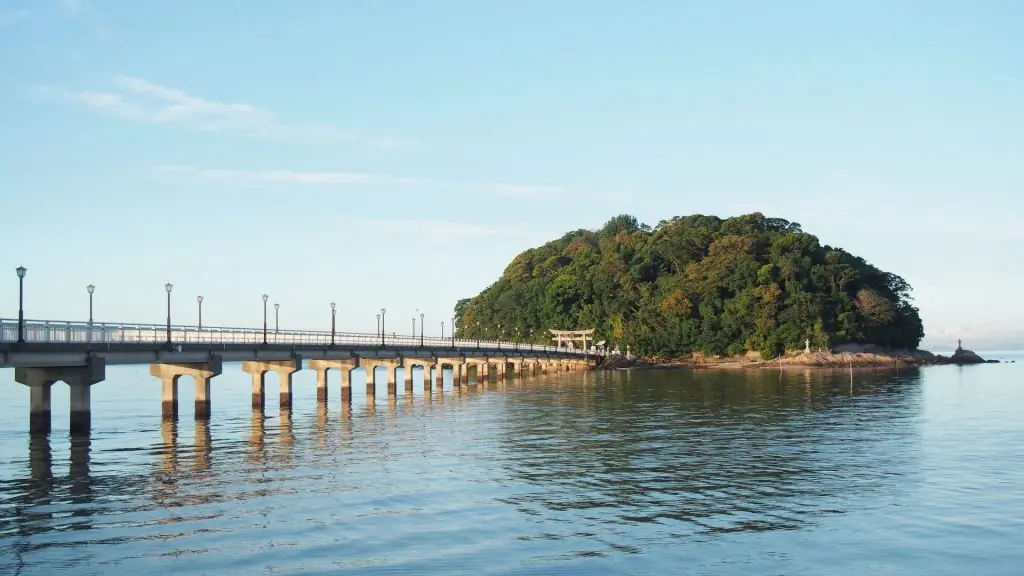
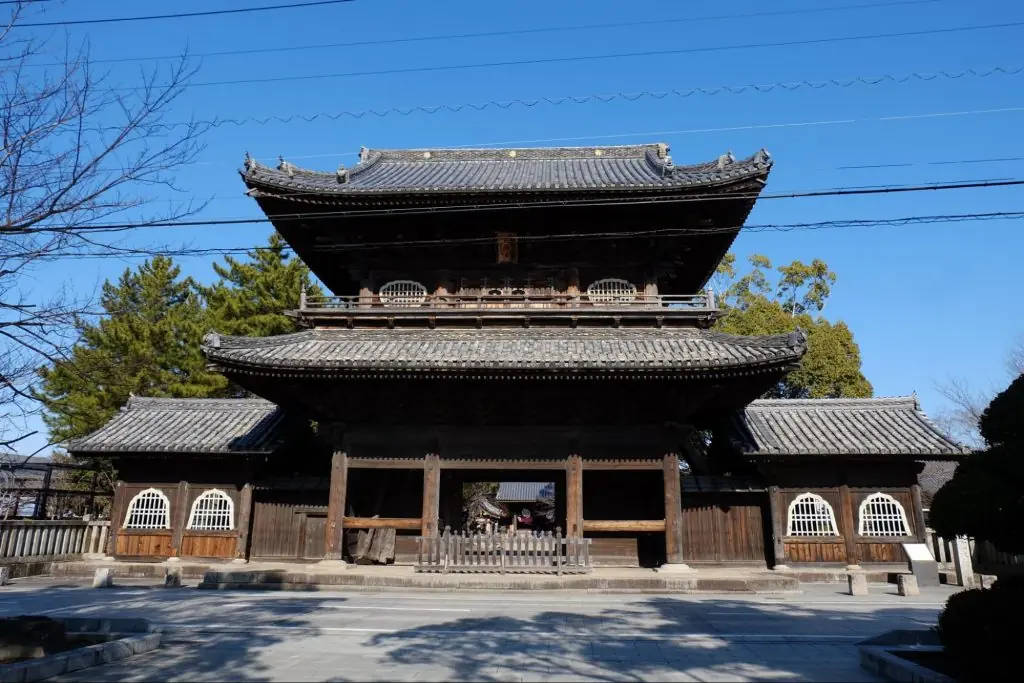

![[Tsushima city] Increase your Profits at "Tsushima Shrine" to Ward Off Epidemics!](https://life-designs.jp/wp/wp-content/uploads/2020/11/image28-1-1024x735.jpg)
![[Ama City] Learn about the Cloisonne Enamel Ware at "SHIPPO ART VILLAGE"](https://life-designs.jp/wp/wp-content/uploads/2019/07/image5-2-1024x768.jpg)
![[Kanie] Searching for a Good Onsen in Aichi? "Owari Onsen Tokai Center"](https://life-designs.jp/wp/wp-content/uploads/2022/09/image23-9-1024x768.jpg)
![[Yatomi City] "Kainan Kodomo no Kuni" is Full of Adventure! A Perfect Park for Family Outings](https://life-designs.jp/wp/wp-content/uploads/2021/11/FotoJet-2021-11-01T204549.003-1024x683.jpg)

![[Indoor Facilities] Where to Go on Rainy Days in Tokai Area! For Family Outings!](https://life-designs.jp/wp/wp-content/uploads/2023/07/FotoJet-23.jpg)





![[Special Feature] Enjoy Outdoor Activities!](https://life-designs.jp/wp/wp-content/uploads/2019/12/LD_banner_w1920x1088_outdoor-1-768x435.jpg)
![[Ghibli Park] Beginner's Guide](https://life-designs.jp/wp/wp-content/uploads/2023/07/ghiblipark_w1920h1088_20240422-768x435.png)
![[Tokai Area] Place to Go on Rainy Days!](https://life-designs.jp/wp/wp-content/uploads/2022/03/f76405aaa33944a4ba88a131fbc56523-1024x580.png)
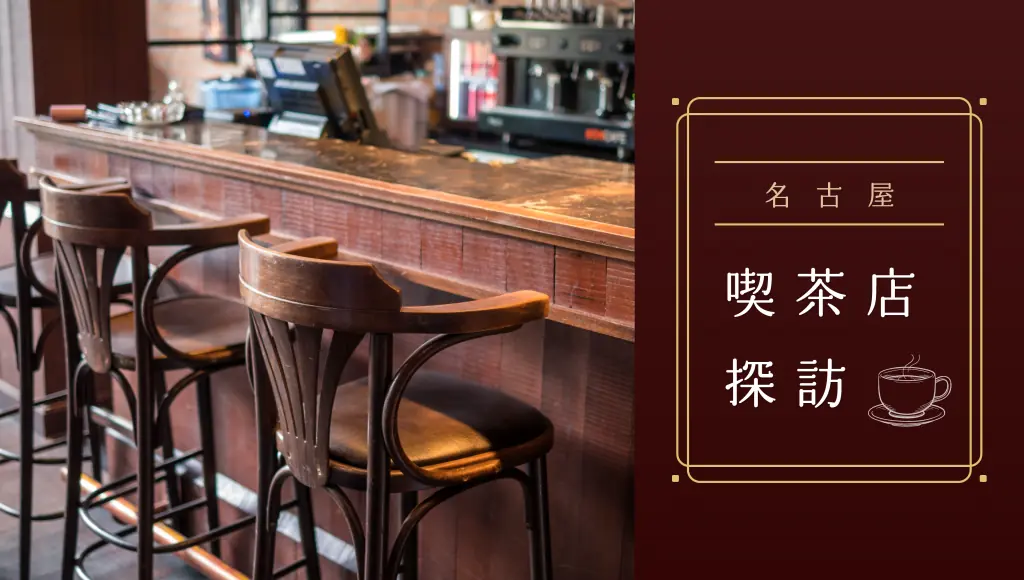
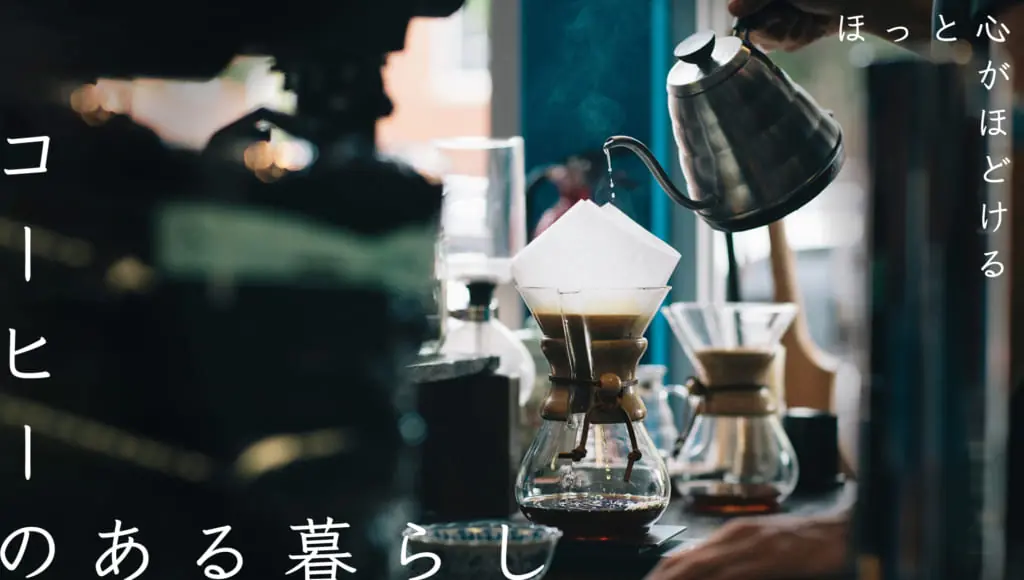
![[Tokai Area] Scenic Spots which You'll Never Forget](https://life-designs.jp/wp/wp-content/uploads/2019/12/LD_banner_w1920x1088_prospect-1-1024x580.jpg)

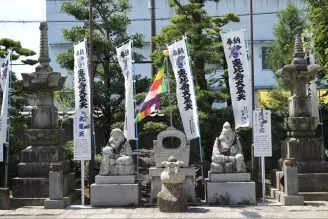
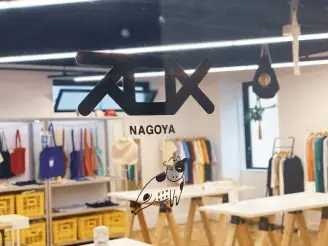
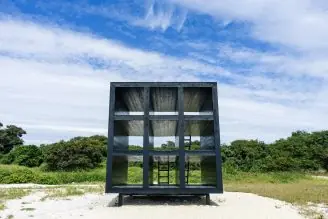
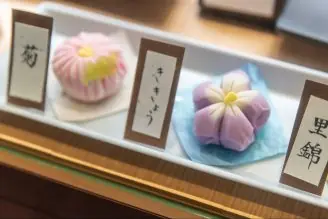
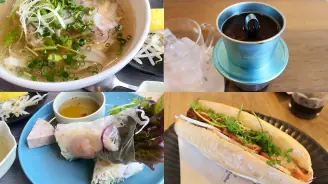
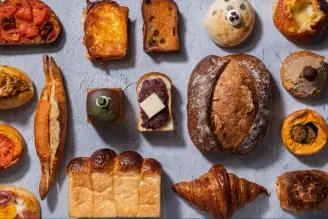
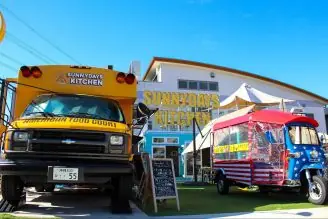
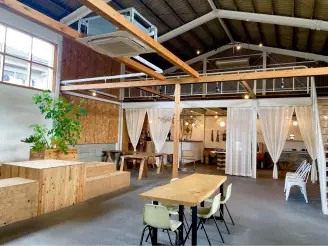
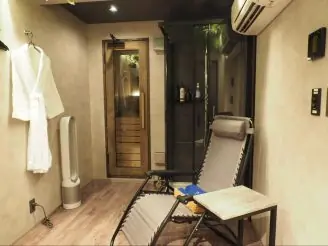
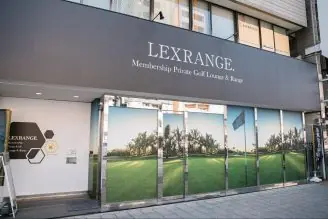
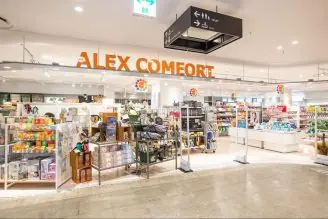
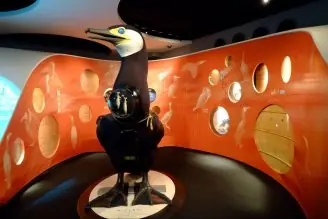
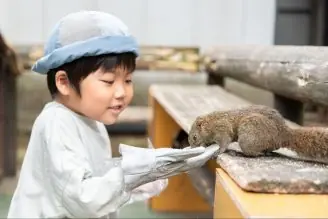
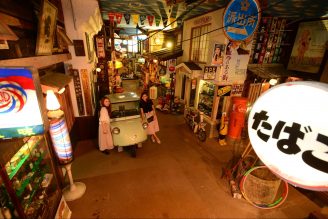
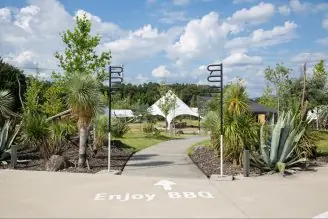



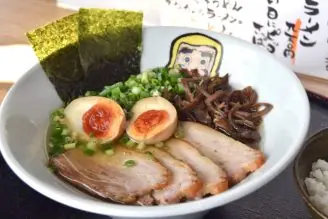

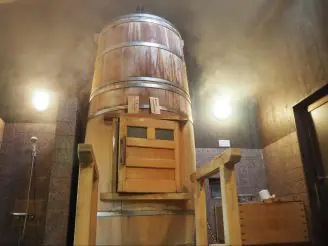

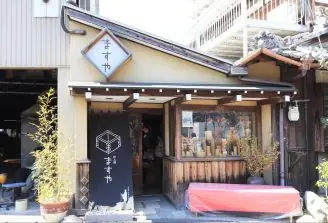
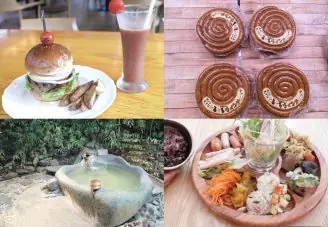
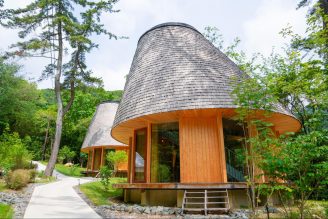

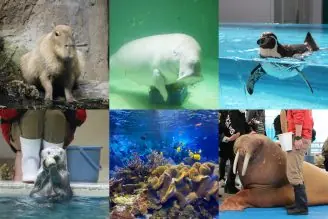
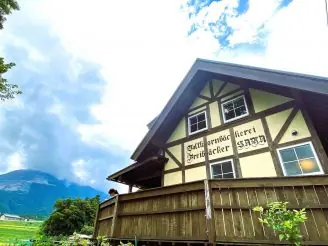
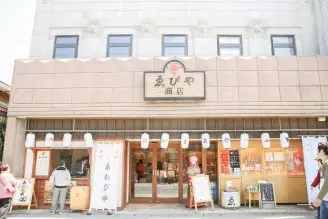
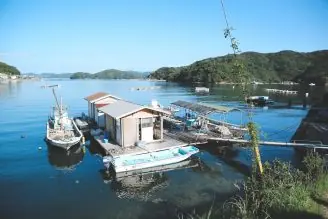
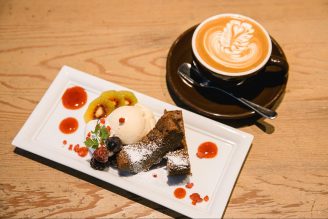
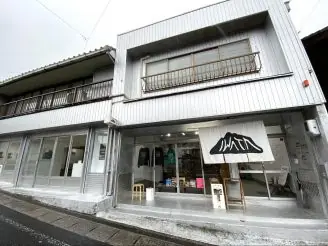
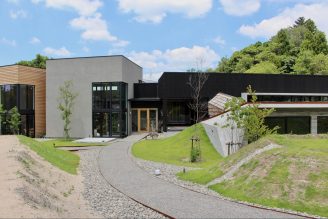
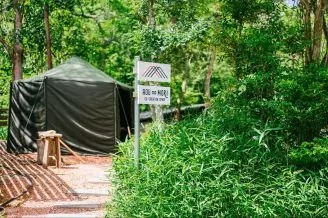
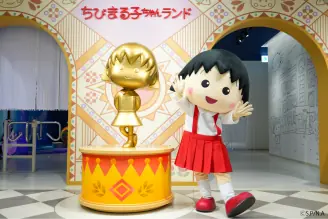


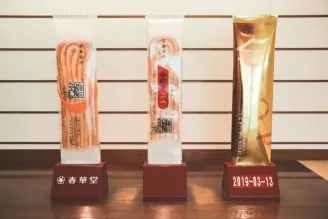
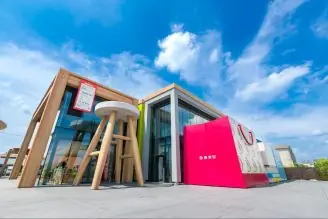




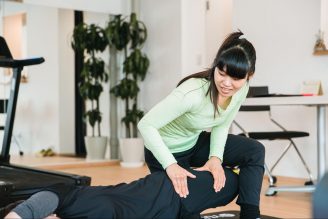
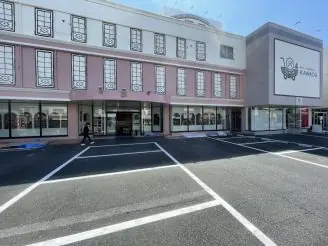
![[28 selections] I want to get it when I go to Ghibli Park! Recommended goods & souvenirs (Ghibli’s Grand Warehouse edition)](https://life-designs.jp/wp/wp-content/uploads/2023/07/07bb34f30842ccc4c6412fc060e1966c-1024x683.jpg)
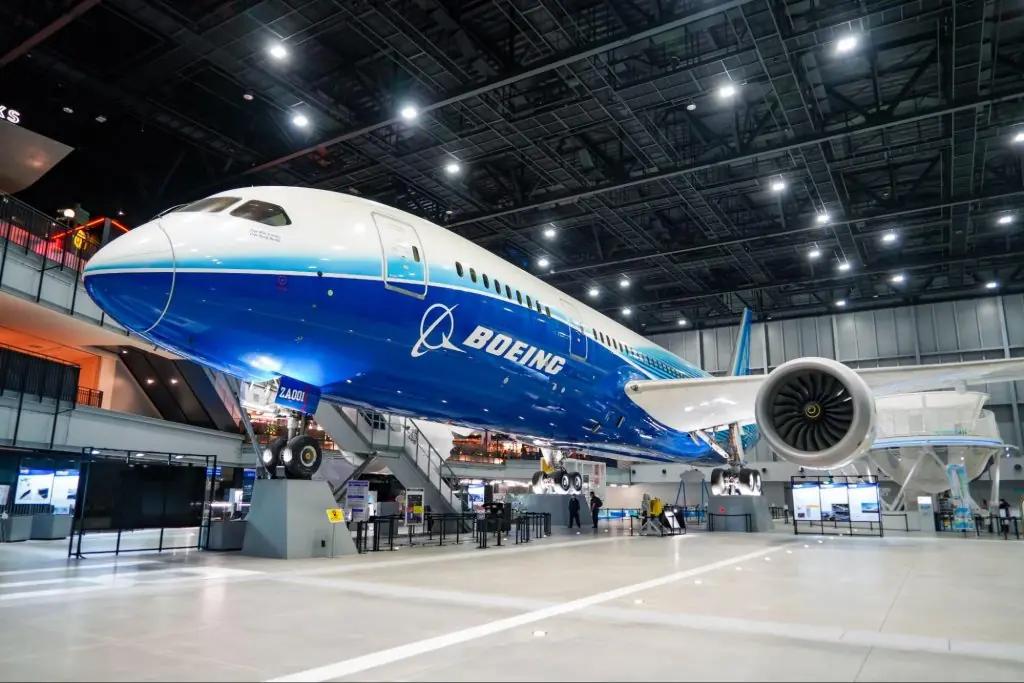
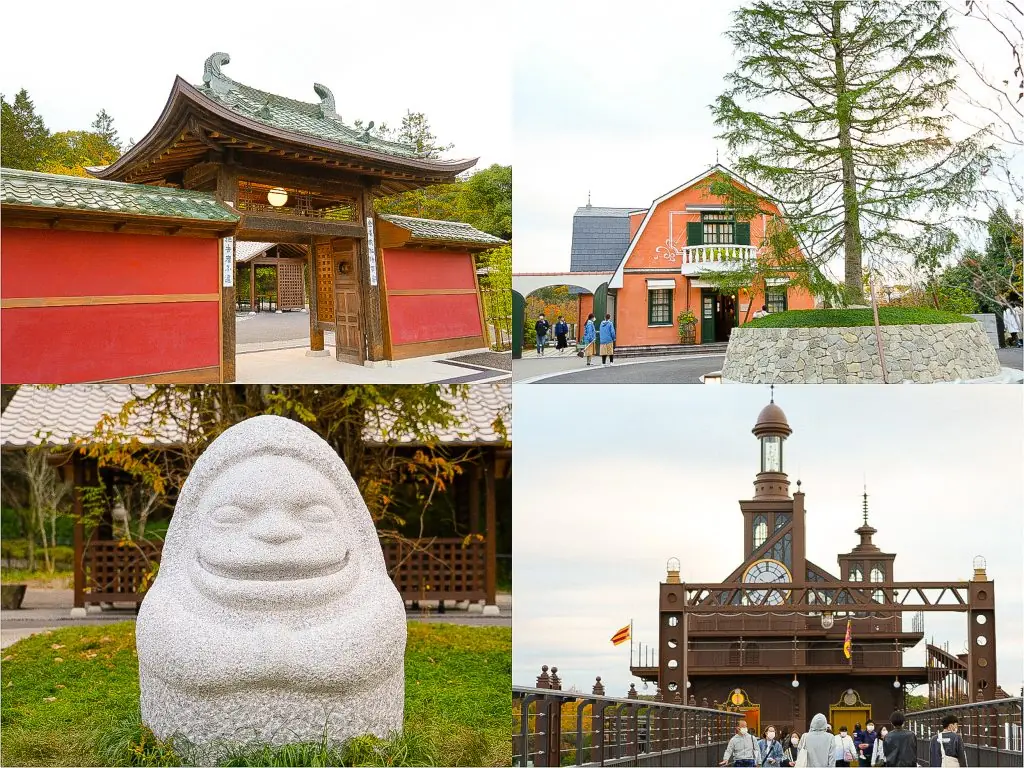
![[Aichi, Gifu, Mie] 30 Family-Friendly Spots to Go in Winter!](https://life-designs.jp/wp/wp-content/uploads/2019/12/image21-1-768x543.png)
![[Within 2hrs by Car] 12 Outing Areas where You can Go on a Day Trip from Nagoya!](https://life-designs.jp/wp/wp-content/uploads/2023/07/odekake12_w1200h900_20240422-328x246.png)
